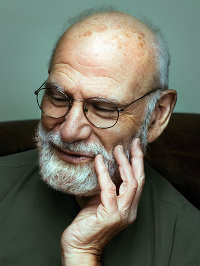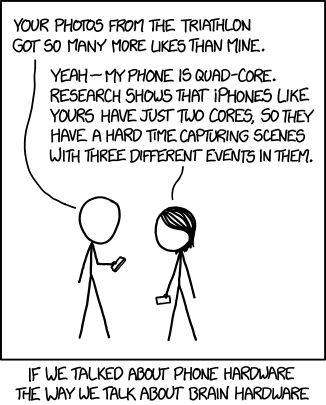Jdopplegaenger
Shared posts
Twelve Signs a Storyteller Is Building Romantic & Sexual Chemistry
Forget Strong Female Characters! We Need Complicated Female Characters Who Screw Up (A Lot)

Every few months like clockwork, it happens again: the never-ending debate over Strong Female Characters.
Twelve Traits for a Lovable Hero

What traits are highly likable? I have you covered with this list of twelve. However, to help you understand why these traits are effective, I’ve broken them into three categories: sympathetic, selfless, and entertaining.
Sympathetic Traits
 Harry Potter is an orphan abused by his aunt and uncle.
Harry Potter is an orphan abused by his aunt and uncle.These are traits that turn your character into an underdog. Essentially, your audience will start feeling sorry for your character, and then they’ll become invested in watching your character succeed. For these traits to work, it’s important that the audience doesn’t feel the hero is responsible for the sorry state of their life. It must also feel natural and important to the story; if the audience thinks you stuffed these traits in just to pull on their heartstrings, your efforts will backfire.
1. Impoverished
 Katniss has to hunt because her family can’t buy food.
Katniss has to hunt because her family can’t buy food.Your hero can’t make ends meet. They don’t just have a list of bills they are worried about paying; they’re going without something important. They could be sleeping out on the street, surviving without medical care, or getting four hours of rest a night because they work three jobs.
It’s easier to build sympathy for impoverished kids. Unfortunately, people often blame adults for their own poverty. However, you can absolutely use this for adults; the audience just needs to understand how they got where they are. Maybe they need expensive life-saving medicine, or they have no time for a job while caring for ailing parents and children.
2. Lonely
 Emmet parties with his plant because he has no friends.
Emmet parties with his plant because he has no friends.Your hero doesn’t have any loved ones in their life, and they clearly want some. They make failed attempts at engaging others, and they use proxies like photos of the deceased or famous personalities to help fill the gap.
Loneliness is easier to use with mature adults than children or young adults. Children and youth usually have a caregiver to provide support, and in general they have an easier time making friends. A child’s tea party with a stuffed animal is cute rather than sad. But it can work for young people if you demonstrate why they have no companionship from children or adults. Being weird or socially awkward isn’t enough; there must be a compelling reason for why they are isolated.
3. Mistreated
 Judy and Nick have to overcome bigotry.
Judy and Nick have to overcome bigotry.Your hero is mistreated by other people, and the audience can see how it causes them distress. They might be treated harshly by those who should be caring for them, rejected from community gatherings, or even hunted down.
Don’t let their mistreatment become cartoonishly overblown. Start with a believable cause such as bigotry or abuse. Do research on what that actually looks like in the real world. Then remember that your character will have adapted at some level to their harsh conditions.
Sympathetic traits don’t work for every story; heroes come from a wide variety of backgrounds. However, evoking sympathy doesn’t require your hero to be a good person. If you have an anti-hero who isn’t strong on moral fiber but also doesn’t need to feel powerful, these are an excellent fit.
Selfless Traits
 Sam can’t carry your story, but he’ll carry you.
Sam can’t carry your story, but he’ll carry you.These are traits that demonstrate how your character puts others first and themselves last. The best way to bring these traits out is to show the cost they impose on your character. If they helped a cat out of a tree, it will mean more if doing so made them late for work or resulted in numerous scratches.
4. Responsible
 Madam President doesn’t sleep.
Madam President doesn’t sleep.Your hero steps up to do the hard work no one else wants to do. When something goes wrong, they are the one to accept responsibility. Their efforts are utterly thankless, but they don’t do it for gratitude. They do it because it needs to be done.
If your protagonist is on a mission or working a job, responsibility will fit in smoothly. Make sure the work they volunteer for is unpleasant or risky but very important. For a bonus, let another character take the credit.
5. Nurturing
 In Trollhunters, Jim endears himself early by caring for his mom.
In Trollhunters, Jim endears himself early by caring for his mom.Your hero sees to the needs of one or more people: comforting them, sheltering them, feeding them, putting them to bed. They go above and beyond what is expected of them, staying up long hours or giving up activities they enjoy.
This trait works best for men or children. Unfortunately, society expects women to care for others, which makes it difficult to portray their efforts as extraordinary. But by portraying your male hero as a nurturer, you can both make your character likable and help to change this double standard.
6. Modest
 Neo insists he is not the One, that he isn’t special.
Neo insists he is not the One, that he isn’t special.Your hero is humble and self-deprecating. They have a good reason not to be – they do magnificent work. But they don’t think much of themselves, and they refuse any praise, payment, or rewards offered to them.
If your protagonist still needs a flaw to start their character arc, this can provide it. Over the course of the story, they can learn to value themselves and accept the rewards they deserve.
7. Heroic
 Jessica Jones constantly risks herself to protect others.
Jessica Jones constantly risks herself to protect others.Your hero steps in to protect others against a dangerous physical threat. They may be better equipped to face that threat than the person they are protecting, but their victory is by no means certain. In the process of protecting others, they face a very real risk to their own safety.
For this to work, the person being saved should feel sympathetic. A hero who apprehends robbers for breaking the law won’t gain much likability, but someone who jumps in to rescue an animal or child could gain a lot. Your hero can rescue an object if you demonstrate how important that object is to other people.
8. Charitable
 Aladdin gives food to kids even worse off than him.
Aladdin gives food to kids even worse off than him.Your hero gives to those who are in need. What they give up isn’t just a few coins they can spare but something they could have used. Maybe they give up their own dinner to feed someone who is starving, or they give away a warm hat that was a favorite possession.
It’s difficult to make your charitable character feel selfless if they are wealthy. If they inherit a fortune, they’ll have to give the entire thing up. If they are impoverished, their charity will make a strong impression.
9. Understanding
 In Fruits Basket, Tohru assumes the best of everyone.
In Fruits Basket, Tohru assumes the best of everyone.Your hero holds no ill will against anyone; they are forgiving to a fault. When others mistreat them, they assume that person is just having a bad day. They appreciate everyone they meet and seek out positive traits in even the most badly tempered people.
The trait is most striking in seasoned adults who do not come off as naive. While children can also benefit from being understanding, your audience may assume they’ll grown out of it.
Selfless traits work in a wide variety of situations and are easy for storytellers to implement. That makes them the go-to traits for likability.
Entertaining Traits
 Seven of Nine breathes much needed life into Voyager.
Seven of Nine breathes much needed life into Voyager.These traits provide character novelty that keeps the audience engaged. They can be a breath of fresh air among well-used genre conventions or an otherwise serious atmosphere. However, make sure that characters with these traits are well-rounded. Otherwise their novelty could fade, leaving your audience with nothing else to be attached to.
10. Witty
 Deadpool is about 80% zingers by volume.
Deadpool is about 80% zingers by volume.Your hero spouts zinging one-liners and other quips that make them fun to watch. They respond irreverently to unpleasant authority figures or intimidating villains, landing a sweet burn. In doing so they’ll frequently get themselves into trouble, but that never dulls their tongue.
Witty heroes work best for characters who are of humble means. Their witty repartee makes the audience feel vicariously empowered in situations they usually have to endure. A rich and powerful person who uses their wit is more likely to appear mean.
11. Eccentric
 River can kill you with her quirks.
River can kill you with her quirks.Your hero is quirky and endearing. They don’t look at the world in the same way other people do, which allows them to make interesting commentary on just about everything. They are likely to be put off by things that others consider normal and fascinated by things that others consider dull. They have an innocence that allows them to make criticisms without coming off as mean or even negative.
Eccentricity works well for characters who either aren’t fully human or have unusual backgrounds. If they were raised alone on a space station by educational computer programs, that would explain why they’re so strange.
12. Subversive
 Shrek is the greenest and grumpiest hero that there ever was.
Shrek is the greenest and grumpiest hero that there ever was.Your hero upends widespread conventions and defies entrenched beliefs. They aren’t the type of person who’s supposed to be the hero, but they don’t care. They use their genre savvy to make fun of everyone who plays it straight, defying as many cliches as they can in the process.
You can’t tack subversiveness onto a hero you’ve already created; you have to start at the very beginning. Use a demographic that is never represented in the genre, and give them traits that heroes never have. Then give them attitude to match.
Entertaining traits are the trickiest to implement. There is a fine line between quirkiness that is engaging and quirkiness that is annoying. While one of these traits is enough to make your character loved in a best-case scenario, consider adding a selfless or sympathetic trait just in case it doesn’t turn out the way you intended.
Your hero can’t have too many likable traits, though not all traits will fit your story. If you want to do more than one, first pull from separate categories; that will give you the largest payoff. Then as long as your character has both strengths and weaknesses, you’ll be on a roll.
Need an editor? We’re at your service.
Why D&D-Style Hitpoints Aren’t An Abstraction
Why D&D-Style Hitpoints Aren’t An Abstraction

But every once in a while, someone will hit upon the idea that D&D-style hitpoints are actually an abstraction, so they make perfect sense. They don’t represent physical health, the argument goes, they represent stamina or maybe a character’s narrative plot shields. This take seems to be getting more common, and I’ve even seen it written into RPG books themselves like some sort of charm against criticism.
This argument doesn’t hold up, but it has the potential to set game design back a decade if too many people take it to heart. That means it’s time to talk about exactly why D&D-style hitpoints will never feel like an abstraction, so we can put this idea to bed.
The Terminology Doesn’t Make Sense
The first hurdle you run into when trying to imagine D&D-style hitpoints as an abstraction is the way the rules are described. The word “hit” certainly implies that hitpoints refer to being physically struck rather than some kind of near miss or immaterial scratch, but that’s not all.
The terminology found in abilities that give hitpoints back is even thornier. The most well known of these are D&D’s Cure Wounds spells. These spells are described as healing physical injuries, just like their title implies. If hitpoints represent abstract stamina rather than actual damage, then what wounds are being cured?
This isn’t just an issue in fantasy systems. Games set in a modern universe usually have a First Aid or Medicine skill that performs the same function, restoring hitpoints as if the character had suffered an actual injury. At this point, it starts to seem like characters with hitpoint loss spontaneously generate a wound to be healed once the medic comes over.
The problem goes beyond healing. Most games refer to a successful attack roll as a “hit,” not a “near miss that tires your opponent out.” Characters have an Armor Class or a Dodge Difficulty, again giving players the impression that they’re making physical contact. It’s an uphill battle to convince players they haven’t really taken a dozen sword hits when everything in the rules says they have.
Everything Else Is Simulationist
Let’s say you can get past the terminology issues. The next hurdle you’ll run into with abstract D&D hitpoints is that most systems that use them are otherwise incredibly dedicated to simulating the real world.
These simulationist systems have precise rules for how many seconds are in a round, how many times a character can attack in that round, and even how many feet they move in those few seconds. Range increments are precisely calculated in real measurements, and cover bonuses are assigned based on what percentage of the character’s body is hidden.
Some games go even further, with precise distances for how far a character can jump based on their height or carefully calculated rates of ammo consumption. When a game is that detailed about most elements, GMs can’t expect players to suddenly switch gears and view health as a vague abstraction that could mean anything.
More specifically, GMs can expect players to do that, but a lot of them won’t. Players will naturally assume physical damage is as precise and simulationist as the rest of the game. This is what they’ve been primed to expect, and telling them that’s not the case doesn’t create good results.
The Implications Are Absurd
Let’s assume a player can get past a game’s terminology and other simulationist aspects to view D&D-style hitpoints as an abstraction. Next, they have to deal with the ridiculous cartoon world that abstraction creates. It’s bad enough when they’re only dealing with melee attacks. Sure, the fact that a max damage hit doesn’t even phase a mid-level enemy makes it feel like the PC is wielding foam weapons, but it’s not too difficult to imagine an opponent bending to avoid the blow or raising a shield in defense.
The absurdity really starts when you get into area effect weapons. In fantasy games, these are usually spells like Fireball, while modern and scifi systems use grenades. Either way, D&D-style hitpoints allow characters to survive a ball of fire or fragmentation grenade going off at their feet, and it’s really hard to explain that with an abstraction.
All the normal ways a character might survive an explosion are forbidden by other rules. The character can’t run away because that would violate movement rules. They can’t hide behind something because there are usually precise rules for cover, and hitpoints function the same way even if the character is standing in an empty room. All you’re left with is the image of a Looney Tune getting blown up only to wipe the soot off their face and keep going.
Then you get into natural damage from things like falling or fire. High-level characters with D&D-style hitpoints can survive hundred-foot falls with ease or stand within a raging inferno as the fire plinks away at their HP. What kind of abstraction do you use for that, exactly? The only way it doesn’t completely shatter the group’s suspension of disbelief is if this is a campaign about Greek heroes from the Iliad.
Hitpoints Act Like Physical Health
No matter how many people try to excuse D&D-style hitpoints as an abstraction, they’ll never get around the fact that having a lot of HP is indistinguishable from being able to soak up absurd amounts of physical damage. We’ve already covered how characters get more HP from a higher stamina attribute, and how healing spells return HP like they’re fixing an injury, but it goes further.
Consider a fairly common action scenario: holding someone at gunpoint, or bowpoint as the case may be. The drama of this situation comes from one character not being able to do anything for risk of being shot. But under D&D-style hitpoints, that character can either rush their enemy or calmly walk away, confident in their ability to shrug off the one or two hits they might receive.
A similar dynamic occurs when a high-level character goes out to fight a horde of low-level enemies. In prose or film, we’d see the character employ clever tactics to avoid fighting all their enemies at once, or maybe they’d sport some kind of magical talisman that protects them from harm. But with D&D-style hitpoints, none of that is necessary. The PC can soak up dozens of arrows and swords standing perfectly still, just by virtue of their hitpoints.
At this point, it doesn’t really matter if hitpoints represent abstract stamina or the number of bullets a character can absorb before keeling over because it’s become a distinction without a difference. No matter how cleverly the GM describes near misses and battle fatigue, D&D-style hitpoints still create a world where no one above level three or so needs to fear physical damage, unless it’s from one of those rare abilities that can mysteriously kill without having to deal with hitpoints at all.1
Abstract Health Must Actually Be Abstract
The idea of using abstract hitpoints isn’t inherently bad. In fact, I generally prefer it over systems that try to be hyper-realistic. It turns out that trying to accurately simulate injury to the human body is a real pain. But the hitpoints must actually be abstract; they can’t just be labeled that way after the fact.
Many systems have managed this over the years. 7th Sea has an excellent system of flesh wounds and dramatic wounds, with the former representing all the inconsequential scrapes that swashbuckling heroes get. Fate uses a narrative system to represent how well a character is doing in the fiction. Mouse Guard assigns an extremely abstract “disposition” to each side of a conflict to represent how close they are to winning.
Each of these systems has a different approach, but they all have one thing in common: their hitpoints were designed to be abstract from the beginning. They weren’t given that label as a way to deflect legitimate criticism.
- Save or Die spells, we often called them.
Conserving Cooper’s Cove
 I’d like to tell you about a beautiful piece of land in West Virginia and how it needs a bit of help right now.
I’d like to tell you about a beautiful piece of land in West Virginia and how it needs a bit of help right now.
It’s an area called Cooper’s Cove, home to the Burgundy Center for Wildlife Studies, a nature camp founded in 1967. For many years, Alison spent her summers attending, and later working, at this camp. It was here, in 2004, that she developed the first prototype for the game that would eventually become Nature Fluxx, with the input of the kids she was counseling that summer.
The Burgundy Center owns a sizable chunk of land – over 500 acres – but developers have pushed back the wilderness a lot during the past 50 years, and there’s this beautiful 98 acre section of woods, known as Doc Fry’s land, which BCWS would REALLY like to buy, to extend and connect key areas of the camp’s land and conserve them for generations to come.
They’ve been saving up to buy this property for 12 years, and they’ve got 2/3rds of the money they need in the bank… but the longer it takes them to get enough to close the sale, the more sections of wooded land are being broken off and turned into housing developments.
So the pressure is on to raise the extra money needed to buy Doc Fry’s property, and I’m hoping to get your help. The Cooper’s Cove Conservation Fund (CCCF) will be the recipient of the next donation from the Nature Fluxx Fund, plus I just made my own rather large donation to the cause.
I think one of the best ways to help protect the environment is to support causes like the Nature Conservancy, who make it their mission to acquire tracts of undeveloped land and just hold onto them forever. This is like a small, local version of that concept, and the time to act is now.
If you’d like to support the CCCF too, please click this link.
Thank you!
Five Concepts for Becoming a Better Storyteller

1. The Author Is Dead
This strangely named principle comes from a 1967 essay by Roland Barthes titled The Death of the Author. While the original essay was more complex, these days the principle boils down to the idea that a writer’s intent for a piece doesn’t matter when evaluating or interpreting it. The author’s opinion on what the work means is no more valid than the opinion of a reader.
Storytellers need to embrace this principle for completely practical reasons. Once thousands of people are consuming your story, you can’t tell all of them how to interpret what you’ve created. If 75% of your customers think your main character is a terrible person, it won’t matter whether that character has a heart of gold they didn’t notice. You can try to explain why you wrote that character the way you did, but it’s unlikely to change how your work is perceived.
Since we can’t tell audiences what to think, The Author Is Dead puts the onus on us to communicate effectively. We’re responsible for crafting a work that evokes the response we want from readers. Any messages we want to convey must be clear without adding outside commentary. Conveying the messages we intend is very difficult, but we’ll never get there if we don’t accept that the story must speak for itself.
2. Comprehension Scarcity
Storytellers often think of stories as limitless. But our ability to tell stories is inherently limited on the receiving end. No one can read a million words per second or recount every word in every story. Any audience member can only comprehend and remember so many ideas in a given time frame or word count.
So when you put ideas in your story, you are spending a limited resource. Let’s pretend that resource is a pile of 36 pennies sitting on your writing desk. Each penny represents a small amount of your audience’s attention, comprehension, and memory. Everything you put in your story has to be paid from this pool of pennies.
- You’ve created a unique underwater setting. It adds a lot of novelty to your story, but you’ll have to introduce a lot of ideas for the audience to understand how it works. It costs 12 pennies.
- You’ve got a complex plot with several big reveals and some time-travel loops you have to explain. It costs another 12 pennies.
- You have 12 pennies left for characters. You want to introduce 12 characters, but then each character only gets 1 penny. The audience will barely keep them straight.
- You take the complicated time loops out of your plot, now it only costs eight pennies. Then you choose just four important characters. Each character gets four pennies, enough for your audience to get to know and love them.
Of course, stories don’t have a penny budget that we can objectively count. But the cost of spending over budget is readily apparent: a story that’s slow, confusing, or both. Spend too many pennies, and every penny depreciates in value.
That’s why a good storyteller is a penny-pincher. They know a side quest will take pennies away from the main plot and that a side character will take pennies away from the main character. Any story element that isn’t strengthening the whole work is detracting from the whole work. While it can be hard to let go of things we’ve put into our stories, having this perspective helps us realize it’s necessary.
3. Center Your Darlings
A common refrain in fiction writing is “kill your darlings.” This is generally said to encourage writers to remove things from their story that shouldn’t be there, but that they don’t want to let go of. And the biggest reason to remove favorites is comprehension scarcity. Darlings are often siloed away from everything else in the story. Because they aren’t serving the work as a whole, they become a big waste of pennies.
That’s why a centered darling is a safe darling. The better you are at making your favorite things central to your story, the less of those things will have to go. Do you love theorizing about warp-engine technology? Don’t just give your audience lectures on the subject; make your plot about warp engines. Do you love that rambunctious half-dragon character? Make them your main character.
This not only saves you from heartache later, but it gets your passion working for you instead of against you. Everyone does a better job when they care about what they’re doing.
Of course, this is one of those situations where an ounce of prevention is worth a pound of cure. It’s better to identify your darlings early and craft your story around them than to move them into the center later. But even when you’re revising, it’s worth knowing that cutting those extraneous story elements isn’t the only option – just the easiest one.
4. Real-World Fallacy
The term “narrative fallacy” is used to describe how people make up inaccurate and overly simplistic narratives to explain real-world situations. Conversely, “real-world fallacy” can be used when people treat situations in a fictional narrative as though they are happening in the real world. Let me give you a couple examples.
“It’s not sexist that women can’t be werewolves in the story. The reason there aren’t women werewolves is because the gene for lycanthropy is on the Y chromosome.”
In fiction, everything from when it rains to which foods are eaten has been chosen by a person. Nothing is a natural occurrence. If the storyteller chooses to associate magic powers with the Y chromosome or writes every female character so she loves wearing sexy clothing, that doesn’t make the story any less sexist. In-story explanations can’t make up for bad choices about what the story depicts.
“The Star Wars villains don’t need to be competent because real-world villains aren’t always competent.”
What should happen in a story is not the same as what does happen in real life. If copying reality was the end goal of stories, everyone would stick to nonfiction. Fictional villains have to be competent to fulfill their storytelling purpose: raising tension. Real-world villains do not have this requirement.
To save time and energy, we often create much of our narratives without thinking hard about what we’re building. In doing so, we tend to include things because we perceive them to be a part of the real world. But while stories should be believable where possible, what works for the story is still different from what we see when we look out a window. Our audience will expect a story that’s more novel, just, and exciting than their daily lives.
5. Pareto Improvement
Borrowing from economics, a Pareto improvement is a change that gives some people a benefit but doesn’t extract a cost from anyone else. The change may not be a win-win, but it’s at least a win-tie, and that’s still objectively better. The goal of Pareto improvement is getting to Pareto efficiency – the state where you can’t make any more improvements without extracting a cost from someone.
How does this relate to storytelling? It’s a good starting guideline for when something should change in a story. Imagine you’re in a book club of six people, sitting in a circle discussing the latest read. Two of the people in your club say they didn’t like the villain because he does whatever’s plot convenient. The rest respond by explaining why they think the villain’s actions are logical. The people who were bothered by the villain’s behavior are outnumbered, so you conclude that there’s no problem with the story’s villain.
But think: could a Pareto improvement be made to this story? Almost certainly. Making the villain’s behavior appear more rational will improve the experience of the two people who were bothered by the perceived inconsistency. Everyone else is unlikely to mind. Judging by your book club, that’s a better reception with one-third of the book’s audience, and it will cost nothing.
Pareto improvement is by no means the last word in what should change. If only one person is bothered by something, it may not be worth revising for them. And sometimes you can’t make one audience group happy without making another group unhappy. But thinking in terms of Pareto improvement can help you see critical feedback as an opportunity instead of as something to explain away.
Mythcreants is a site for storytellers, so when we’re looking at popular works, we take a storyteller-centric approach. More often than not, that means being hard on the stories we all enjoy. We can’t craft stories to the best of our ability if we let ourselves ignore or dismiss a story’s problems.
Need an editor? We’re at your service.
Editing Fiction Like a Pro: The 5 Most Common Mistakes That Bog Down Your Narrative
The most common mistakes that bog down an otherwise flowing narrative are easy to avoid or correct when you’re editing fiction scenes. These five simple steps will make your writing soar and your readers sit up and take notice.
by Ellen Tanner Marsh
Writing is hard, even for prolific published authors, but polishing your work shouldn’t be. By focusing on the “don’t’s” of sentence structure rather than agonizing over every word until it sounds just right, you can make your prose shine.
How do I know? As a long-time freelance editor, I’ve helped countless authors whose writing skills ran the gamut from brilliant to barely literate overhaul or fine-tune their plots and characters and buff up their words. Some of these authors were well-known (no names, please), some not so much, but all of them, whether gifted or just getting there, tended to make the same mistakes when putting pen to paper.
How Being an Editor Helped Me Be a Better Writer (and Vice Versa)
The five most common mistakes that bog down an otherwise flowing narrative are easy to avoid or correct when you’re editing fiction scenes. Here’s how. (Note: None of the examples below are mine. My first books, written when I was barely out of college, make me cringe too much to share! However, these are taken from actual books, although the wording has been subtly changed to protect the innocent.)
1. Don’t show every physical movement.
Too often prose bogs down in unnecessary physical action. Trust your readers to imagine what your character is doing without leading them through every step. Here are two examples:
She grabbed the gun with her right hand and used her left to search inside the drawer.
He turned away from the door, crossed the room, and leaned against the counter to pick up a wine glass.
Instead try:
She grabbed the gun and searched the drawer.
Crossing to the counter, he picked up a wine glass.
Join us at indieLAB: A new event for entrepreneurial authors, freelancers and copywriters.
2. Don’t catalogue the contents of every room or location.
While descriptions are vital in helping readers to image a scene, don’t overdo. Describe the location the way you see it in your mind’s eye, then go back and delete most of your words. Really. Ask yourself: What does my reader truly need to know to make this office or bedroom or muddy field, etc., come alive? Offer a general impression with one or two thoughtfully chosen visual features.
Here’s an example:
She flipped on the light to find a room with a blue-striped bedspread in one corner, a worn oak desk under the window, and a burgundy-upholstered chair sitting beside a pitted fireplace filled with ashes.
Descriptive, sure, but the visuals took away from the fact that there was a corpse on the floor near the fireplace!
This rewritten sentence relies on spare wording that’s focused on the action, which helps maintain the tension of the scene:
She flipped on the light to find a cramped bedroom and the body of a man lying prone by the fireplace.
3. Don’t specify a person’s height in feet and inches.
These appeared in a lot of the books I edited. If you must include this action-slowing detail, don’t write something like this when introducing a new character:
He was five feet eleven inches and weighed 195 pounds.
Instead, go for inference or suggestion:
He was a heavy-set man, not very tall, but certainly muscular enough to give me pause before I decided to confront him.
4. Don’t punctuate every spoken sentence with dialogue tags.
Avoid overusing such tags as he said, she shouted, he asked. In fact, go over your manuscript and delete every fifth or sixth one, especially in lengthy conversations between characters. Then delete some more. The result will be much snappier repartee.
5. Don’t forget to clean the clutter.
Avoid overusing semicolons, exclamation marks, the em dash (used to suggest an abrupt interruption in speech or an aside in a sentence already overpopulated with commas), and the ellipsis.
Here’s a pro tip: Use the global search function to find these and other punctuation marks. You might be surprised how many are sprinkled needlessly across your otherwise beautiful prose.
By focusing on these simple “don’ts,” your writing will sound snappy and your narrative will always flow.
 Ellen Tanner Marsh was barely out of college when she penned her first historical romance. After writing and publishing more than twenty books, including two New York Times bestsellers, she turned to fulltime editing. Now, after polishing thousands of pages of purple prose during an editorial career that spanned more than two decades, she has rewritten a trilogy of her own. Look for the first release, Diamond Dark, to be published in July.
Ellen Tanner Marsh was barely out of college when she penned her first historical romance. After writing and publishing more than twenty books, including two New York Times bestsellers, she turned to fulltime editing. Now, after polishing thousands of pages of purple prose during an editorial career that spanned more than two decades, she has rewritten a trilogy of her own. Look for the first release, Diamond Dark, to be published in July.
Online Course: Revision and Self-Editing
Every writer knows that the journey to publication is a long and hard road. Once you finish your first draft, it’s time to start the arduous process of self-editing and revision. When you take this online writing workshop, you will learn the methods of self-editing for fiction writers to ensure your writing is free of grammatical errors. Learn more and register.
The post Editing Fiction Like a Pro: The 5 Most Common Mistakes That Bog Down Your Narrative appeared first on WritersDigest.com.
Eight Absurdities We Force on Female Characters

It probably won’t surprise you that the answer is “no.” Women are no more bizarre or unknowable than anyone else. Writers just have to depict them like they depict men, but with feminine pronouns. By setting out to write strange creatures known as “women” instead, storytellers create the very problems they are trying to solve. Sometimes this comes from individual prejudice, sometimes from cultural baggage around gender. Either way, these human-made problems make it seem like women are hard to write, which contributes to underrepresentation of women in fiction. It would be impossible to list all the difficulties storytellers create for themselves, but here are eight of the most common.
1. Lone Representation
 Mistborn has over a dozen major characters, but Vin is the only woman.
Mistborn has over a dozen major characters, but Vin is the only woman.When a novel has just one female character and she’s a full-time parent, audiences complain that the novel is saying women shouldn’t have careers. When a novel has just one female character and she’s a badass warrior with no interest in aesthetics, audiences complain that the novel is pushing women to adopt more traditionally masculine traits in order to be taken seriously. What’s going on here? Is there something wrong with women being full-time parents or having traditionally masculine traits?
Of course not. The issue in these cases is not with the characters themselves but with their status as the only woman in a big cast. When a story has only one woman, that woman cannot help but become a stand-in for her gender.1 This is a problem storytellers create for themselves by including one woman in their cast, and the solution is simple: include more women.
Adding more women on top of the existing cast isn’t the answer. That usually results in a bloated story with pointless characters. Instead, storytellers need to change their existing cast to include more women – or better yet, include them from the start. This doesn’t mean any depiction of a female character is fair game – some things will be misogynistic no matter how many women a story has – but it does mean that individual female characters won’t be under a microscope.
This advice scales with the size of a story’s cast. A story with a dozen major characters should aim for at least six women unless it has a compelling reason to do otherwise. A smaller story is under less pressure. Audiences are happy to accept a single female character if the story only has one character.
2. Separate Fighting Styles
 Outlander has the protagonist use an ineffectual dagger because a 1.5lb sword is deemed too heavy for her.
Outlander has the protagonist use an ineffectual dagger because a 1.5lb sword is deemed too heavy for her.I used to think it was strange how often I would see people online asking how to realistically write women in fight scenes. I thought, “Simple: pointy end goes into the other fighter.” But then I realized that people were actually confused and that the debates over which killing tools would work as “women’s weapons” are largely spawned by existing stories.
Every time a novel depicts a woman needing to find a special weapon or a film gives women a sexy fighting style, it furthers the idea that the way women fight is inherently different from the way men fight. This is nonsense – the physics of murder don’t change based on gender – but the idea persists.
Storytellers can free themselves from this problem by simply accepting that women in their setting fight the same way men fight. A sword doesn’t particularly care about its wielder’s pronouns. If a storyteller actually wants to know what tactics a physically weaker fighter would employ against a stronger opponent, they can ask that, but it should be decoupled from gender. If that level of detail is important to the setting, then it should be considered any time combatants differ in strength, not just when one of them is female.
3. Enigmatic Decision-Making
 Wheel of Time is obsessed with how strange and inscrutable women are. Who knows why they do anything?
Wheel of Time is obsessed with how strange and inscrutable women are. Who knows why they do anything?Storytellers often display an intense need to differentiate the way women make decisions. Maybe they read an article about statistical differences in the way men and women solve problems, or maybe they just have an inherent bias.2 Either way, this line of reasoning usually leads to stories where women seem like a different species.
In reality, most humans make decisions the same way: by considering available information and past experiences, then trying to reach the optimal outcome. It’s a messy process, but it’s fairly universal, at least at the level most fiction operates. Storytellers rarely seem to have this problem with male characters, but introduce a female character and she suddenly needs to make all her choices based on the phases of Saturn.
While some storytellers will try to defend this practice in the name of realism or creating a deeper world,3 it actually does the opposite. Constantly calling attention to a character’s gender creates a stilted world full of characters who are difficult to empathize with. Most people in real life don’t actively consider their gender whenever they make a decision.
Authors can save themselves a lot of trouble by simply basing a character’s decisions off of their personal history and experiences. Instead of asking, “How would a woman react to a rampaging dragon?” ask, “How would a noble with a strong education and court upbringing react to a rampaging dragon?” That method creates all the diversity of problem-solving a story needs without making any unintentional statements about gender.
4. “Feistiness”
 In Kaze No Stigma, Ayano’s violent anger is portrayed over and over again as harmless and endearing.
In Kaze No Stigma, Ayano’s violent anger is portrayed over and over again as harmless and endearing.Stop me if you’ve seen this before: a female character shouts angrily at a man, threatens him, and maybe even injures him, and the other men in the room look at each other knowingly and say some variant of “she’s a feisty one.”
This scene gets played out with minor variations across countless stories, all of which portray a woman’s anger as no big deal. Sometimes this dismissal is just used to infantilize the character; sometimes it’s also used to increase her sex appeal. Whatever its purpose, it’s a strong signal to the audience that this character doesn’t matter. The author doesn’t take the character seriously, so why should the audience? That specter haunts the character for the rest of the story, lowering tension and investment in everything the character does.
Authors rarely portray male characters as feisty. When a male character exhibits such hostile behavior, he is treated like a serious threat to the safety of others. Dismissing and demeaning female characters who behave the same way reinforces the idea that violence by women isn’t a big deal in real life, which can have tragic consequences for people in abusive relationships.
Storytellers who make this mistake do so because they’ve been taught not to take women seriously as threats. Even though most people intellectually know better, it’s hard to get away from the idea that an angry woman is amusing. That’s just something storytellers need to work on if they want their female characters to be taken seriously.
5. Femininity Balancing
 A Darker Shade of Magic makes it clear that Lila isn’t like other girls (who are weak and slutty) but also that she’s traditionally attractive.
A Darker Shade of Magic makes it clear that Lila isn’t like other girls (who are weak and slutty) but also that she’s traditionally attractive.Everyone knows that when you write a female character, you’re basically walking a tightrope. If you make them too girly, no one will like them because girliness is bad for reasons. But if she’s too masculine, then she won’t be hot and might even – *gasp* – mess with someone’s concept of gender. So what you presumably need is a character who disdains dresses and the color pink but screams a lot and looks like an underwear model.
If that sounds like a lot of pointless trouble to go to, it is. There isn’t actually anything wrong with embracing traditionally feminine things or with a woman who takes on traditionally masculine traits.4 And yet storytellers keep forcing themselves into this balancing act, to the point that “not like other girls” has become a routinely mocked cliche.
So why does this happen? Because authors are letting themselves fall for the cultural catch-22 that devalues anything feminine but also insists women conform to traditional expectations. That’s why so many storytellers try to make their female protagonist seem cool by degrading other women and yet return to the same feminine stereotypes.
The solution is to let a female character present whatever level of femininity or masculinity makes sense for the story, and then to not make a big deal about it. If your character likes armwrestling and DIY construction projects, that’s fine; they can like those things without deriding dresses and nail polish. By the same token, a character who is into dresses and nail polish isn’t inherently bad. Those are just their preferences.
6. Frequent Reminders of Attractiveness
 Artemis makes a point of reminding us that Jazz is totally sexy and hot, narrative flow be damned.
Artemis makes a point of reminding us that Jazz is totally sexy and hot, narrative flow be damned.Whether through formal instruction or the mean streets of beta reading, most storytellers know that a protagonist shouldn’t spend a huge amount of time thinking about their appearance. It’s jarring for a character to constantly consider how they look, unless they have a good reason to do so like going to a fancy party.
Despite this common understanding, storytellers also have to constantly remind the audience how hot their female characters are, right? At least that seems to be the case, based on how often authors emphasize their female leads’ looks. Of course, this dual need makes writing women much harder, since readers don’t typically appreciate their stories being interrupted with reminders about a character’s sexy bod.
It gets worse! Storytellers also need to put in some token effort to make their female leads relatable, especially in stories aimed at women, but not in any way that would reduce the characters’ attractiveness. This is why we get characters with the “flaw” of being too slender or having hair that’s too red. It makes readers roll their eyes, but authors clearly have no other choice.
But what if there were another way? What if authors could just describe what their character looks like, and then leave it at that unless it was relevant to the story in some way? That would solve the problem, and there’d be no downside. Sounds wild, I know, but this technology has already been cracked for male characters, and very serious scientists in lab coats have assured me it can work just as well for female characters.5
7. Sexual Abstinence
 The Fire’s Stone is obsessed with whether or not protagonist Chandra has sex because it will weaken her magical powers, maybe?
The Fire’s Stone is obsessed with whether or not protagonist Chandra has sex because it will weaken her magical powers, maybe?Storytellers who want to put their female character in a romance face the ultimate conundrum: such relations usually result in the character having sex, but women having sex is bad! It must be, or else why would we have so many slurs and degrading terms for sexually active women?
Some storytellers try to get around this problem by assuring the audience that their characters have been pure and chaste before meeting their current beaus, but that raises the question of why sex was bad before and okay now. Short of making the boyfriend a divine avatar,6 there’s really no explanation that will square that circle. Another common tactic is to explain that the female character used to have sex with many partners, but now she’s seen the light and will only have sex with this one dude. Except that just sounds like a downgrade.
If this seems like a headache to you, then you’ll be delighted to know that all the obsession with how much sex a woman has is nothing but misogynistic cultural baggage. Sexual activity has nothing to do with moral value, no matter what gender or lack thereof is involved. So relax: you officially have permission not to comment on how much sex a female character has had before their current relationship. In most stories it’s not relevant, and if by some chance it is, you can save yourself a lot of trouble by mentioning it in nonjudgmental terms.
8. Gendered Magic
 In Gifts, women can pass the genes for magic death rays down to their sons but can’t use the power themselves, for science reasons.
In Gifts, women can pass the genes for magic death rays down to their sons but can’t use the power themselves, for science reasons.A lot of people hold views about ways in which men and women are just inherently different, and when those people are spec fic storytellers, their views can translate into gender-based magic. Sometimes this is explicit, with characters openly stating that women and men have different magical abilities. Other times the split is more subtle, with female characters only receiving feminine-coded powers like healing and telepathy by sheer coincidence.
No matter how it’s manifested, gendered magic systems earn the story a lot of extra scrutiny. Suddenly, every choice about how magic works seems like a grand statement about gender.7 If women are better with fire then men, is that a statement about women being more hot headed? If a system has men gain their magic through long periods of isolation, is it saying that men aren’t fit to be part of a family?
Gendered magic also raises unavoidable questions about people outside the conventional gender binary. In a world where magic discriminates between men and women, what kind of magic does a nonbinary or trans person use? Audiences can’t help but ask these questions because magic represents the physical rules on which a world runs. It’s like crafting a world where E=MC² only holds true when a woman calculates it.
For all that, most gendered magic systems aren’t trying to say anything interesting or insightful about gender. It’s usually something an author does for a bit of added novelty or that they simply add on impulse. That’s not a good enough reason to add such a deep pitfall to the story. The vast majority of stories will do better to leave their magic unaffected by gender.
Speculative fiction would be in a much better place if storytellers would stop making things unnecessarily difficult for themselves, especially when it comes to writing women. So many (mostly male) authors approach the subject as if they’re solving an ancient puzzle, like it requires intensely deep thought to write about a woman slaying a dragon or piloting a space fighter. It doesn’t, and the sooner people realize that, the better.
Need an editor? We’re at your service.
- This is true for any underprivileged group, but we’re talking about women today.
- Hey, could be both.
- No joke, I once read a neuroscience book that insisted the way to tell better stories was by emphasizing gender stereotypes.
- Or with people who step outside the gender binary, no matter what they were assigned at birth.
- Well, what they actually said was, “Of course you don’t have to constantly harp on a female character’s appearance. But I’m a physicist, so why are you asking me?” And then they threw me out.
- Which I have seen some stories do.
- And sometimes it is!
How to Build a World for Anthology Stories

But it can go wrong. Superhero comics notoriously mash characters into the same setting, even when they don’t fit. TV shows like Star Trek and Doctor Who try to tell multiple stories in the same world, and they end up contradicting themselves as often as not. Fortunately, you can head these problems off if you do your homework properly.
Expand the World
 At least 100 more heroes are just off screen.
At least 100 more heroes are just off screen.The first step to telling anthology stories is building a large world. If your world isn’t big enough, all the stories will muddle together. Audiences will wonder why the characters who live so close together never meet or why the events of one story don’t have more of an impact on the others. If you address those questions by making the stories more interconnected, then you’ve lost a major advantage of an anthology: audiences don’t have to read them in a specific order.
For a bad example, look no further than Marvel’s comic-book universe. While that setting technically stretches over the whole Earth,1 it focuses heavily on New York City. It’s not clear exactly how many superheroes make their home in the Big Apple, but it’s a lot. This not only raises serious questions about why any villain ever sets foot there but also damages credibility in solo adventures. Anytime Daredevil, Jessica Jones, Luke Cage, or any of the others respond to a problem, it’s hard to believe they aren’t crowded out by a dozen or so super-competitors.
The Marvel writers can’t help themselves; they keep coming back to NYC, even though they clearly want readers to be able to pick up an Avengers comic without reading everything that’s happened to Spider Man in the last ten years. To avoid Marvel’s problem, you must create a world with enough interesting places to support multiple stories. This world can be a giant space empire or just a single planet.2
You don’t need to fully flesh out every element of the world in advance. That would be incredibly difficult and rob you of flexibility down the road. Instead, jot down a few interesting ideas for different places that you can come back to later. And no matter how much you like one location, don’t go back there until you’ve used a few of the others first.
For a good example, see Discworld.3 While Ankh-Morpork is clearly the center of the disc, Pratchett created dozens of other places where he could tell interesting stories. You can pick up the first book of Tiffany Aching’s adventures on the Chalk and not need to know anything about Commander Vimes or Granny Weatherwax, because they live in different areas of the Disc.
Limit Travel and Communication
 Wait, it takes how long to get across the Federation?
Wait, it takes how long to get across the Federation?So you have a decently sized world where the protagonists of your various stories don’t all have to live next door to each other, but there’s another difficulty. Readers start asking why your main characters don’t ever get on a plane, train, or automobile to help one another. After all, when Plot City is threatened, it’ll be on the news, and surely the heroes of McGuffin-Ville will come help! Since you want to keep your stories distinct, this is a problem.
Star Trek is particularly bad in this area. In that universe, both communication and travel move faster than the speed of light. Even the most isolated parts of the Federation are well acquainted with the news of everything that’s happening elsewhere. And yet, when the Deep Space Nine (DS9) characters are fighting the most important battles of the Dominion War, Captain Picard and the Enterprise-E are nowhere to be seen. Where else would Starfleet’s most powerful ship be during a desperate war? In Star Trek: First Contact, when the Borg attacked Earth, the DS9’s Defiant showed up at the fight, but Worf was the only main cast member on board. Did Sisko just decide to stay home?
The Marvel Cinematic Universe is even worse. Where is Captain America during Iron Man III, when Tony Stark is fighting the supervillain equivalent of Osama bin Laden? Where is Tony when Captain America is dealing with a Hydra-controlled S.H.I.E.L.D.? These characters don’t live next door, but they all have cellphones and access to planes, so why aren’t they showing up to help each other?
To avoid this problem, slow down the speed of both communication and travel. By the time a character from one of your stories hears about the problems another is having, they’ll already be over. Even though it’s not an anthology story, A Song of Ice and Fire is an excellent example. Characters in those books often have a global view of events, but usually can’t go running to their friends whenever something is wrong since it takes a long time to ride across Westeros.
This can work for scifi as easily as fantasy. Just make travel between the planets in your space empire take years. Then you won’t have to worry about the characters from Narrativia IV intruding on Foreshadow II’s apocalypse story.
Keep the Problems Local
 I’m surprised the space/time police didn’t show up more often.
I’m surprised the space/time police didn’t show up more often.Superman won’t waste his time flying to Gotham because a thief stole someone’s wallet. But he’d be over there in a second if a supervillain was threatening to blow up the whole city or using the city as a base to blow up the world. Of course, having Superman show up would put a serious cramp in Batman’s style, so the writers are unlikely to make it happen.4
If every story in your anthology is dealing with a problem that threatens the whole setting, it will get harder and harder to justify keeping them separate. Even if you limit communication and travel, you’ll have to explain why your scattered characters don’t band together against the evil plots that threaten them all.
For an example that isn’t from comic books, see Doctor Who. The Doctor is constantly running into one universe-ending disaster or another, and we know other people in the Whoverse have the ability to travel through time. Why do they so rarely show up to help? Buffy The Vampire Slayer has the same problem. World-ending events happen every week in Sunnydale, so the town should be overrun with anyone who wants the world to still be there.
Keep your problems more localized so you won’t have to explain why they don’t draw attention. That doesn’t mean the problems are low stakes. The invasion of a small town by monsters is super-high stakes for the people who live there, but it’s not likely to show up on everyone else’s radar.
Discworld has this process mastered. It’s very rare that a plot hinges on the world being destroyed. Instead, you have Commander Vimes trying to keep interspecies tension from turning violent in Ankh-Morpork while Rincewind runs away from angry kangaroos on the Lost Continent. Then, if you do want a crossover between your stories, all you need to do is up the problem’s scale. Archchancellor Ridcully and Granny Weatherwax don’t normally interact, but they’ll team up if the kingdom of Lancre is threatened by marauding elves.
Plan Long Time Scales
 Glad to see that after hundreds of years they still use swords and armor.
Glad to see that after hundreds of years they still use swords and armor.Even if you take precautions to make sure your characters won’t stumble willy-nilly into each other’s stories, your world’s credibility can be damaged from too many important events happening at once. Readers will raise their eyebrows in disbelief if every interesting part of your setting is constantly erupting in the chaotic events that accompany any good plot.
Once you run out of space, you can separate your stories with time instead. Letting a few decades pass between stories will make sure the world has time to settle down a bit before everything erupts again. Even more importantly, it’ll give time for the previous generation of protagonists to shuffle off this mortal coil so they won’t steal the next generation’s thunder.
To pull this off successfully, you’ll want to spend some brain power figuring out how your setting will evolve over time. Societies are rarely static, and your world will be more believable if the passage of time means more than a different set of faces using all the same stuff. Authors forget this on a regular basis. Many of the Narnia books take place decades, or even centuries, apart, and yet the setting is always a fantasy version of medieval Europe. That might have been acceptable in 1950, but readers today will expect a more logical world.
Planning ahead is even more important in scifi, where technology is expected to advance. Making a new story for the Star Trek universe would be difficult as the setting already has replicators, warp drive, and transporters. How much more advanced can the technology get and still fit in a TV show’s budget?5
Discworld gives us a more positive example. As the books slowly move forward in time, the Disc changes. Kings come and go, religions reorganize themselves, and technology advances. Most striking is the development of dwarven culture, which slowly changes from repressive and isolationist to progressive and open. Even though most characters who were alive in the first book are still around by the last one, the setting changes so much that it was credible for Pratchett to tell as many stories as he liked.6
Make the World Diverse
 It takes all sorts to make the disc go round.
It takes all sorts to make the disc go round.Let’s say you’ve taken all the steps necessary to make sure your anthology stories don’t get muddled together. You have one more problem. If every part of your setting is the same, your stories will get boring fast.
As much as I love Star Trek, the original series had a real problem with every planet the Enterprise visited being the same. Part of this was due to the budget. The show only had so many sets, so the alien planets were bound to look similar. But more importantly, the writers recycled several plots until they became predicable. The first time Kirk ran into an all-powerful computer and talked it to death, it was awesome. By the third time, the magic had worn off.
However, you don’t want your settings to be too disparate either. If the different parts of your world have nothing in common, you might as well use different worlds. For the perfect balance, establish a few broad themes, and then create diversity within them. This will keep the audience from getting bored, but also maintain the cohesion that anthology stories need.
By now you won’t be surprised that Discworld gives us a positive example to follow. The disc plays host to everything from London-inspired Ankh-Morpork, to rural villages on the Chalk, to the Arabian-themed Klatch. These places all have distinct atmospheres, and long-time readers know where they are without ever being told the location’s name. Ankh-Morpork even contains huge amounts of diversity within itself, from Klatchian immigrants to dwarven print shops.
But while no two places on the Disc are the same, they all share Pratchett’s distinct style of humor and proclivity for subverting expectations. No matter where you go, anyone in charge is suspect, because those who seek power are rarely worthy to wield it. From the Ramtop Mountains to the Counterweight Continent, you know that anyone who looks like a huge badass is probably just full of themselves, and it’s the quiet one in the corner who’s really dangerous. If you can capture this duality of diverse settings and consistent themes, your anthology story will be in good shape.
Anthology stories are a strange beast in the world of writing. Some writers treat them like a really extended series, but they have very different requirements. If you try to tell a story in a setting that was originally meant for a novel trilogy, you’ll be in trouble. The worldbuilding requirements are stricter, but the results of success are well worth it because you can tell such a breadth of stories. Just be sure you’re willing to put in the work.
P.S. Our bills are paid by our wonderful patrons. Could you chip in?
- And many alternate Earths besides.
- Planets are big, it turns out.
- It’s always Discworld!
- Unless this is a team-up comic.
- Other than adding seat belts, of course.
- No lie, whenever I use the past tense in regards to Terry Pratchett, I get a little sad.
How To Become A Centaur
 Nicky Case (of Explorable Explanations and Parable of the Polygons internet fame) has a fantastic essay which picks up on the theme of my last Cyberselves post – technology as companion, not competitor.
Nicky Case (of Explorable Explanations and Parable of the Polygons internet fame) has a fantastic essay which picks up on the theme of my last Cyberselves post – technology as companion, not competitor.
In How To Become A Centaur Case gives blitz history of AI, and of its lesser known cousin IA – Intelligence Augmentation. The insight that digital technology could be a a ‘bicycle for the mind’ (Steve Jobs’ quote) gave us the modern computer, as shown in the 1968 Mother of All Demos which introduced the world to the mouse, hypertext, video conferencing and collaborative working. (1968 people! 1968! As Case notes, 44 years before google docs, 35 years before skype).
We’re living in the world made possible by Englebart’s demo. Digital tools, from mere phones to the remote presence they enable, or the remote action that robots are surely going to make more common, and as Case says:
a tool doesn’t “just” make something easier — it allows for new, previously-impossible ways of thinking, of living, of being.
And the vital insight is that the future will rely on identifying the strengths and weakness of natural and artificial cognition, and figuring out how to harness them together. Case again:
When you create a Human+AI team, the hard part isn’t the “AI”. It isn’t even the “Human”.
It’s the “+”.
The article is too good to try to summarise. Read the full text here
Cross-posted at the Cyberselves blog.
Previously: Tools, substitutes or companions: three metaphors for thinking about technology, Cyberselves: How Immersive Technologies Will Impact Our Future Selves
The backfire effect is elusive
 The backfire effect is when correcting misinformation hardens, rather than corrects, someone’s mistaken belief. It’s a relative of so called ‘attitude polarisation’ whereby people’s views on politically controversial topics can get more, not less, extreme when they are exposed to counter-arguments.
The backfire effect is when correcting misinformation hardens, rather than corrects, someone’s mistaken belief. It’s a relative of so called ‘attitude polarisation’ whereby people’s views on politically controversial topics can get more, not less, extreme when they are exposed to counter-arguments.
The finding that misperception are hard to correct is not new – it fits with research on the tenacity of beliefs and the difficulty of debunking.
The backfire effect appears to give an extra spin on this. If backfire effects hold, then correcting fake news can be worse than useless – the correction could reinforce the misinformation in people’s minds. This is what Brendan Nyhan and Jason Reifler warned about in a 2010 paper ‘When Corrections Fail: The Persistence of Political Misperceptions’.
Now, work by Tom Wood and Ethan Porter suggests that backfire effects may not be common or reliable. Reporting in their ‘The Elusive Backfire Effect: Mass Attitudes’ Steadfast Factual Adherence’ they exposed over 10,000 mechanical turk participants, over 5 experiments and 52 different topics, to misleading statements from American politicians from both of the two main parties. Across all statements, and all experiments, they found that showing people corrections moved their beliefs away from the false information. There was an effect of the match between the ideology of the participant and of the politician, but it wasn’t large:
Among liberals, 85% of issues saw a significant factual response to correction, among moderates, 96% of issues, and among conservatives, 83% of issues. No backfire was observed for any issue, among any ideological cohort
All in all, this suggests, in their words, that ‘The backfire effect is far less prevalent than existing research would indicate’. Far from being counter-productive, corrections work. Part of the power of this new study is that it uses the same materials and participants as the 2010 paper reporting backfire effects – statements about US politics and US citizens. Although the numbers mean the new study in convincing, it doesn’t show the backfire effect will never occur, especially for different attitudes in different contexts or nations.
So, don’t give up on fact checking just yet – people are more more reasonable about their beliefs than the backfire suggests.
Original paper: Nyhan, B., & Reifler, J. (2010). When corrections fail: The persistence of political misperceptions. Political Behavior, 32(2), 303-330.
New studies: Wood, T., & Porter, E. (in press). The elusive backfire effect: Mass attitudes’ steadfast factual adherence. Political Behaviour.
The news is also good in a related experiment on fake news by the same team: Sex Trafficking, Russian Infiltration, Birth Certificates, and Pedophilia: A Survey Experiment Correcting Fake News. Regardless of ideology or content of fake news, people were responsive to corrections.
Read more about the psychology of responsiveness to argument in my ‘For argument’s sake: evidence that reason can change minds’.
Conspiracy theories as maladaptive coping
 A review called ‘The Psychology of Conspiracy Theories‘ sets out a theory of why individuals end up believing Elvis is alive, NASA faked the moon landings or 9/11 was an inside job. Karen Douglas and colleagues suggest:
A review called ‘The Psychology of Conspiracy Theories‘ sets out a theory of why individuals end up believing Elvis is alive, NASA faked the moon landings or 9/11 was an inside job. Karen Douglas and colleagues suggest:
Belief in conspiracy theories appears to be driven by motives that can be characterized as epistemic (understanding one’s environment), existential (being safe and in control of one’s environment), and social (maintaining a positive image of the self and the social group).
In their review they cover evidence showing that factors like uncertainty about the world, lack of control or social exclusion (factors affecting epistemic, existential and social motives respectively) are all associated with increased susceptibility to conspiracy theory beliefs.
But also they show, paradoxically, that exposure to conspiracy theories doesn’t salve these needs. People presented with pro-conspiracy theory information about vaccines or climate change felt a reduced sense of control and increased disillusion with politics and distrust of government. Douglas’ argument is that although individuals might find conspiracy theories attractive because they promise to make sense of the world, they actually increase uncertainty and decrease the chance people will take effective collective action.
My take would be that, viewed like this, conspiracy theories are a form of maladaptive coping. The account makes sense of why we are all vulnerable to conspiracy theories – and we are all vulnerable; many individual conspiracy theories have very widespread subscription – for example half of Americans believe Lee Harvey Oswald did not act alone in the assassination of JFK. Of course polling about individual beliefs must underestimate the proportion of individuals who subscribe to at least one conspiracy theory. The account also makes sense of why some people are more susceptible than others – people who have less education, are more excluded or powerless and have a heightened need to see patterns which aren’t necessarily there.
There are a few areas where this account isn’t fully satisfying.
– it doesn’t really offer a psychologically grounded definition of conspiracy theories. Douglas’s working definition is ‘explanations for important events that involve secret plots by powerful and malevolent groups’, which seems to include some cases of conspiracy beliefs which aren’t ‘conspiracy theories’ (sometimes it is reasonable to believe in secret plots by the powerful; sometimes the powerful are involved in secret plots), and it seems to miss some cases of conspiracy-theory type reasoning (for example paranoid beliefs about other people in your immediate social world).
– one aspects of conspiracy theories is that they are hard to disprove, with, for example, people presenting contrary evidence seem as confirming the existence of the conspiracy. But the common psychological tendency to resist persuasion is well known. Are conspiracy theories especially hard to shift, any more than other beliefs (or the beliefs of non-conspiracy theorists)? Would it be easier to persuade you that the earth is flat than it would be to persuade a flat-earther that the earth is round? If not, then the identifying mark of conspiracy theories may be the factors that lead you to get into them, rather that their dynamics when you’ve got them.
– and how you get into them seems crucially unaddressed by the experimental psychology methods Douglas and colleagues deploy. We have correlational data on the kinds of people who subscribe to conspiracy theories, and experimental data on presenting people with conspiracy theories, but no rich ethnographic account of how individuals find themselves pulled into the world of a conspiracy theory (or how they eventually get out of it).
Further research is, as they say, needed.
Reference: Douglas, K., Sutton, R. M., & Cichocka, A. (2017). The psychology of conspiracy theories. Current Directions in Psychological Science, 26 (6), 538-542.
Karen Douglas’ homepage
Previously on mindhacks.com: Conspiracy theory as character flaw, That’s what they want you to believe. Conspiracy theory page on mindhacks wiki.
I saw Karen Douglas present this work at a talk to Sheffield Skeptics in the Pub. Thanks to them for organising.
no male and female brain types
What would it mean for there to be a “male brain” or a “female brain”? Human genitals are mostly easy to categorise just by sight as either male or female. It makes sense to talk about there being different male and female types of genitals. What would it mean for the same to be true of brains? Daphna Joel and colleagues, in a 2015 paper Sex beyond the genitalia: The human brain mosaic have a proposal on what needs to hold for us to be able to say there are distinct male and female varieties of brains:
1. particular brain features must be highly dimorphic (i.e., little overlap between the forms of these features in males and females).
and
2. those features which are dimorphic must be consistent for each brain (i.e. a brain has only “male” or only “female” features).
They analyse MRI scans of 1400 human brains and find that these conditions don’t hold. There is extensive overlap, so that categorical brains, defined like this, just don’t exist. They write:
…analyses of internal consistency reveal that brains with features that are consistently at one end of the “maleness-femaleness” continuum are rare. Rather, most brains are comprised of unique “mosaics” of features, some more common in females compared with males, some more common in males compared with females, and some common in both females and males…Our study demonstrates that, although there are sex/gender differences in the brain, human brains do not belong to one of two distinct categories: male brain/female brain.
So the easy gender categorisation we can do on the genitals doesn’t translate to the (usually-unseen) anatomy of the brain. The ‘male/female brain’ doesn’t exist in the same way as the male/female sex organs.
Context for this is that there are differences between the average male and average female brain (for overall size, at least, these differences are large). Although there may not be categorical types, a follow up analysis showed that it is possible to classify the brains used in the Joel paper as belonging to a man or a women at somewhere between 69%-77% accuracy. A related study, on a different data set, claimed 93% classification accuracy.
Paper: Joel, D., Berman, Z., Tavor, I., Wexler, N., Gaber, O., Stein, Y., … & Liem, F. (2015). Sex beyond the genitalia: The human brain mosaic. Proceedings of the National Academy of Sciences, 112(50), 15468-15473.
Responses: Del Giudice, M., Lippa, R. A., Puts, D. A., Bailey, D. H., Bailey, J. M., & Schmitt, D. P. (2016). Joel et al.’s method systematically fails to detect large, consistent sex differences. Proceedings of the National Academy of Sciences, 113(14), E1965-E1965.
Chekroud, A. M., Ward, E. J., Rosenberg, M. D., & Holmes, A. J. (2016). Patterns in the human brain mosaic discriminate males from females. Proceedings of the National Academy of Sciences, 113(14), E1968-E1968.
The responses are linked to in Debra Soh’s LA Times article Are gender feminists and transgender activists undermining science?
Previously: gender brain blogging
How to overcome bias
How do you persuade somebody of the facts? Asking them to be fair, impartial and unbiased is not enough. To explain why, psychologist Tom Stafford analyses a classic scientific study.
One of the tricks our mind plays is to highlight evidence which confirms what we already believe. If we hear gossip about a rival we tend to think “I knew he was a nasty piece of work”; if we hear the same about our best friend we’re more likely to say “that’s just a rumour”. If you don’t trust the government then a change of policy is evidence of their weakness; if you do trust them the same change of policy can be evidence of their inherent reasonableness.
Once you learn about this mental habit – called confirmation bias – you start seeing it everywhere.
This matters when we want to make better decisions. Confirmation bias is OK as long as we’re right, but all too often we’re wrong, and we only pay attention to the deciding evidence when it’s too late.
How we should to protect our decisions from confirmation bias depends on why, psychologically, confirmation bias happens. There are, broadly, two possible accounts and a classic experiment from researchers at Princeton University pits the two against each other, revealing in the process a method for overcoming bias.
The first theory of confirmation bias is the most common. It’s the one you can detect in expressions like “You just believe what you want to believe”, or “He would say that, wouldn’t he?” or when the someone is accused of seeing things a particular way because of who they are, what their job is or which friends they have. Let’s call this the motivational theory of confirmation bias. It has a clear prescription for correcting the bias: change people’s motivations and they’ll stop being biased.
The alternative theory of confirmation bias is more subtle. The bias doesn’t exist because we only believe what we want to believe, but instead because we fail to ask the correct questions about new information and our own beliefs. This is a less neat theory, because there could be one hundred reasons why we reason incorrectly – everything from limitations of memory to inherent faults of logic. One possibility is that we simply have a blindspot in our imagination for the ways the world could be different from how we first assume it is. Under this account the way to correct confirmation bias is to give people a strategy to adjust their thinking. We assume people are already motivated to find out the truth, they just need a better method. Let’s call this the cognition theory of confirmation bias.
Thirty years ago, Charles Lord and colleagues published a classic experiment which pitted these two methods against each other. Their study used a persuasion experiment which previously had shown a kind of confirmation bias they called ‘biased assimilation’. Here, participants were recruited who had strong pro- or anti-death penalty views and were presented with evidence that seemed to support the continuation or abolition of the death penalty. Obviously, depending on what you already believe, this evidence is either confirmatory or disconfirmatory. Their original finding showed that the nature of the evidence didn’t matter as much as what people started out believing. Confirmatory evidence strengthened people’s views, as you’d expect, but so did disconfirmatory evidence. That’s right, anti-death penalty people became more anti-death penalty when shown pro-death penalty evidence (and vice versa). A clear example of biased reasoning.
For their follow-up study, Lord and colleagues re-ran the biased assimilation experiment, but testing two types of instructions for assimilating evidence about the effectiveness of the death penalty as a deterrent for murder. The motivational instructions told participants to be “as objective and unbiased as possible”, to consider themselves “as a judge or juror asked to weigh all of the evidence in a fair and impartial manner”. The alternative, cognition-focused, instructions were silent on the desired outcome of the participants’ consideration, instead focusing only on the strategy to employ: “Ask yourself at each step whether you would have made the same high or low evaluations had exactly the same study produced results on the other side of the issue.” So, for example, if presented with a piece of research that suggested the death penalty lowered murder rates, the participants were asked to analyse the study’s methodology and imagine the results pointed the opposite way.
They called this the “consider the opposite” strategy, and the results were striking. Instructed to be fair and impartial, participants showed the exact same biases when weighing the evidence as in the original experiment. Pro-death penalty participants thought the evidence supported the death penalty. Anti-death penalty participants thought it supported abolition. Wanting to make unbiased decisions wasn’t enough. The “consider the opposite” participants, on the other hand, completely overcame the biased assimilation effect – they weren’t driven to rate the studies which agreed with their preconceptions as better than the ones that disagreed, and didn’t become more extreme in their views regardless of which evidence they read.
The finding is good news for our faith in human nature. It isn’t that we don’t want to discover the truth, at least in the microcosm of reasoning tested in the experiment. All people needed was a strategy which helped them overcome the natural human short-sightedness to alternatives.
The moral for making better decisions is clear: wanting to be fair and objective alone isn’t enough. What’s needed are practical methods for correcting our limited reasoning – and a major limitation is our imagination for how else things might be. If we’re lucky, someone else will point out these alternatives, but if we’re on our own we can still take advantage of crutches for the mind like the “consider the opposite” strategy.
This is my BBC Future column from last week. You can read the original here. My ebook For argument’s sake: Evidence that reason can change minds is out now.
William James, dude
William James, founding father of modern psychology is often known by photos of him in his later years. But, here we see him in his early twenties on a trip to Brazil and looking f.i.n.e.
 See the full photo on Wikimedia Commons: William James in Brazil, 1865
See the full photo on Wikimedia Commons: William James in Brazil, 1865
h/t @GregoryHickok on twitter
Vanishing Points: Simple Architectural Drawing Hack Puts Art in Perspective

Architectural drawings have long used geometrical tricks to convey scale, depth, distance and other three-dimensional aspects of realities on two-dimensional surfaces. In a two-vanishing-point drawing, the artist aligns their ruler with a point on one side or the other and draws a line along the edge (or employs another modular straight-edging tool).

The same came be accomplished much more quickly, however, using this simple technique: pin a flexible string to both points along the horizon line and slide a hook along the center. The results will naturally be a bit less than precisely linear, but for many architectural artists a wavy line is typical or even desired (it gives the piece a less rigorously complete look).

Of course, it will only work for a traditional two-point perspective – in cases where the artist wants to include a third vanishing point (for instance, to emphasize verticals in looking up at a skyscraper or create a fish-eye effect) a straight-edge is still required. That, or a free-handed approach based on a picture, presumably the basis of the drawing above.
Drawing Sculptures: 3D Architectural Art Styled After 2D Sketches
This ongoing series of sculptural floating cities and suspended towns could be mistaken for pencil drawings when glanced on a wall or seen in a two-dimensional medium like ...
Sketch in 3D: Remarkable Drawing App Gives Doodles Depth & Dimension
Programs like Sketchup have allowed amateur artists and architects to sculpt and design in three dimensions for years, but this app facilitates far more informal works that really look like ...
Drawing Conclusions: Documenting Every Building in New York
New York is one of the most culturally and architecturally fascinating cities in the world, as evidenced by the millions who flock there every year to get a taste of city life. One Australian ...




[ By WebUrbanist in Art & Drawing & Digital. ]
[ WebUrbanist | Archives | Galleries | Privacy | TOS ]
Vertigo Wallpaper: Warped 3D Room Illusions Transform Flat Gallery Surfaces

You could be forgiven for cautiously entering one of these rooms full of wavy sketched lines, stepping over obstacles that aren’t really there, uncertain whether parts of the walls are really projecting out toward you. Artist Peter Kogler creates spatial illusions that take over every surface of a gallery, turning it into a ‘virtual maze.’ A master of the large-scale print, he’s spent the last 30 years perfecting his techniques. The ones involving grids of lines pull off the most disorienting effects.



Pictured here are installations from the last few years, including work displayed at the ING Art Center in Brussels this year, the Sigmund Freud Museum in Vienna in 2015 and the Galerie im Taxiplalais in 2014. His computer-generated works have even adorned the exterior walls of pavilions and museums, and often feature imagery of snakes, ants and pipes.



According to his artist statement, “Kolger has been interested in new, innovative art practices, not only in the field of visual, but also in performative arts, sound and music. He continued his work by shifting the boundaries of artistic expression and developed a very impressive, emotionally and artistically convincing world, whose layered meanings open communication paths to the widest public.”


“After several years of research at the beginning of his artistic career, in painting, performance and experimental film, since 1984 Kogler has used computer technology. Heralding the future development of computer-generated art already in the ‘60s, in the spirit of that positivist-optimistic time, Michael Noll wrote: ‘The computer is an active medium the artist can interact with at a new level, liberated from many physical limitations of all former media. The artistic possibilities of this kind of creative medium as the artist’s helping device are truly exciting and challenging.”
Illusions in Iran: Surreal 3D Murals Transform Urban Tehran
The blank concrete facades of urban Tehran offer an irresistible canvas for playful large-scale murals that seem to bend reality in unexpected ways. A city of 12 million people that has been ...
Body Paint Illusions Transform Human Models into Animals
Intricately painted and carefully posed, the human bodies serving as canvases for artist Gesine Marwedel are virtually unrecognizable as they morph into swans, flamingos and iguanas. The ...
Inside Out: Print-Crazy Wallpaper Made for Exterior Surfaces
Why should interior walls have all the fun? Prints are nearly always relegated to the insides of homes and other structures while the outside walls are left bare, but a new wallpaper made ...




[ By SA Rogers in Art & Installation & Sound. ]
[ WebUrbanist | Archives | Galleries | Privacy | TOS ]
Is psychosis an ‘immune disorder’?
A fascinating new study has just been published which found evidence for the immune system attacking a neuroreceptor in the brain in a small proportion of people with psychosis. It’s an interesting study that probably reflects what’s going to be a cultural tipping point for the idea of ‘immune system mental health problems’ or ‘madness as inflammation disorder’ but it’s worth being a little wary of the coming hype.
This new study, published in The Lancet Psychiatry, did blood tests on people who presented with their first episode of psychosis and looked for antibodies that attack specific receptors in the brain. Receptors are what receive neurotransmitters – the brain’s chemical signals – and allow information to be transferred around the nervous system, so disruption to these can cause brain disturbances.
The most scientifically interesting finding is that the research team found a type of antibody that attacks NMDA receptors in 7 patients (3%) out of 228, but zero controls.
The study found markers for other neuroreceptors that the immune system was attacking, but the reason the NMDA finding is so crucial is because it shows evidence of a condition called anti-NMDA receptor encephalitis which is known to cause episodes of psychosis that can be indistinguishable from ‘regular’ psychosis but for which the best treatment is dealing with the autoimmune problem.
It was only discovered in 2007 but there has been a long-running suspicion that it may be the best explanation for a small minority of cases of psychosis which can be easily misdiagnosed as schizophrenia.
Importantly, the findings from this research have been supported by another independent study that has just been published online. The two studies used different ranges for the concentration of NMDA antibodies they measured, but they came up with roughly the same figures.
It also chimes with a growing debate about the role of the immune system in mental health. A lot of this evidence is circumstantial but suggestive. For example, many of the genes associated (albeit weakly) with the diagnosis of schizophrenia are involved in the immune system – particularly in coding proteins for the major histocompatibility complex.
However, it’s worth being a little circumspect about this new enthusiasm for thinking of psychosis as an ‘immune disorder’.
Importantly, these new studies did blood tests, rather than checking cerebrospinal fluid – the fluid that your brain floats around in which lies on the other side of the blood-brain barrier, so we can’t be sure that these antibodies were actually affecting the brain in everyone found to have them. It’s likely, but not certain.
Also, we’re not sure to what extent anti-NMDA antibodies contribute to the chance of developing psychosis in everyone. Certainly there are some cases where it seems to be the main cause, but we’re not sure how that holds for all.
It’s also worth bearing in mind that the science over the role of the genes associated with the schizophrenia diagnosis in the immune system is certainly not settled. A recent large study compared the role of these genes in schizophrenia to known autoimmune disorders and concluded that the genes just don’t look like they’re actually impacting on the immune system.
There’s also a constant background of cultural enthusiasm in psychiatry to identify ‘biomarkers’ and anything that looks like a clear common biological pathway even for a small number of cases of ‘psychiatric’ problem gets a lot of airtime.
Curiously, in this case, Hollywood may also play a part.
A film called Brain On Fire has just been shown to film festivals and is being tested for a possible big release. It’s based on the (excellent) book of the same name by journalist Susannah Cahalan and describes her experience of developing psychosis only for it later to be discovered that she had anti-NMDA receptor encephalitis.
Hollywood has historically had a big effect on discussions about mental health and you can be sure that if the movie becomes a hit, popular media will be alive with discussions on ‘whether your mental health problems are really an immune problem’.
But taking a less glitzy view, in terms of these new studies, they probably reflect that a small percentage of people with psychosis, maybe 1-2%, have NMDA receptor-related immune problems that play an important role in the generation of their mental health difficulties.
It’s important not to underestimate the importance of these findings. It could potentially translate into more effective treatment for millions of people a year globally.
But in terms of psychosis as a whole, for which we know social adversity in its many forms plays a massive role, it’s just a small piece of the puzzle.
Link to locked Lancet Psychiatry study.
6 Tips for Getting Rid of Writer’s Block
1. Interview your character. Imagine sitting down over coffee with a character in your story. Come up with a slew of questions and write out your character’s answers. Make up your own questions (e.g., What is your favorite movie? What is your best childhood memory?) or Google Marcel Proust’s Questionnaire for juicy ideas (e.g., If you were to die and come back as a person or a thing, what would it be? What is your greatest extravagance?). Not only find out the answers, but describe how your character reacts during this exchange. What are their gestures, facial expressions, sounds, and other movements? If you prefer, have a character write a letter to you, answering the same questions.


Column by Kara Storti, author of debut novel TRIPPING BACK
BLUE (April 2016, Carolrhoda Lab TM). Kara knew she wanted to
be a writer when she decided to skip her junior prom to attend the
Bread Loaf Writers’ Conference in Middlebury, Vermont. In the years
following she spent most of her free time writing short stories, novellas,
and poems, and composing pop songs. In 2006 she graduated from the
University of Southern Maine with an MFA in Creative Writing, where she
fell in love with writing novels for young adults. Kara has been a singer,
songwriter, pianist, and flautist since she was a child and has performed
throughout the world. Follow her on Twitter.
2. Have another talented author you trust rewrite a scene, a first chapter, or dialogue in your project. Not for the faint-hearted, for sure! However, when I witnessed this kind of rewrite, I saw an outsider bring a spark to the story the author lost in the throes of writer’s block. The re-writer saw a better first sentence for the entire novel that was in the middle of the first chapter, infused dialogue with a touch of humor, reordered phrases, and added missing information. It takes some steeliness to allow another writer to fuss with one’s work, but sometimes a fresh take is a launch pad for progress.
3. Participate in NaNoWriMo (National Novel Writing Month). On November 1, participants work towards the goal of writing a 50,000-word novel by 11:59 on November 30. It allows you to focus on word count and the completion of a novel, even if the writing is (at first) complete crap on the page. You can worry about making it pretty later. As part of the program, there is an online community to encourage and hold you accountable to meet the deadline. Draw energy from your fellow writers, tap into your competitive spirit, and enjoy the process. I know many people who have finished their first published novel using this strategy.
4. Write everything your character might see. Does your main character live in a down‑trodden town? A bustling city? In the middle of nowhere? Visit a similar place and observe everything you see. Write about the sights, smells, textures, and feelings. Document your experience through taking pictures, sketching, or painting. What would your character remark upon if they were present next to you? Or, if you’d rather, choose one object from that setting and describe every detail of it.

Are you a subscriber to Writer’s Digest magazine
yet? If not, get a discounted one-year sub here.
5. Read Bird by Bird by Anne Lamott. She encourages the writer to craft a story one sentence at a time. Don’t focus on the long game; it’s the short game that matters. Sketch out what you’re going to accomplish in the first chapter, not in the first hundred pages. Find what excites you the most and write towards it full force, even if it means taking your sweet time on a single scene. Assign yourself a small portion of the story, whether it’s a paragraph or a pivotal moment, then go on to the next and the next. Compartmentalizing the process can be a great jumpstart towards excellent writing.
6. Consider the ‘why’ of your character’s actions. It is no doubt important to consider the “what if” when beginning your novel or short story; however, considering the “why” regarding a character’s actions can make for an even juicier plot. For example, what if a seventeen-year-old boy chose to fund his sister’s college education by selling drugs, even though he’s struggling with a heroin addiction? But, even more importantly, why is this character using illegal means for a good cause? Is it out of selflessness to help his sister, or does he lust for danger and money? Does this “selflessness” provide him with a good excuse for self-destruction and almost fatal drug use? Delve into the emotions behind the motivations of your characters. One helpful phrase from a writer’s conference that has always stuck with me is “write hot, edit cold.” Let the why fuel the heat in your writing.
——————–
Check Out These Great Upcoming Writers’ Conferences:
- Oct. 28–30, 2016: Writer’s Digest Novel Writing Conference (Los Angeles, CA)
- Nov. 19, 2016: Las Vegas Writing Workshop (Las Vegas, NV)
- Feb. 11, 2017: Writers Conference of Minnesota (St. Paul, MN)
- Feb. 16–19, 2017: San Francisco Writers Conference (San Francisco, CA)
- Feb. 25, 2017: Atlanta Writing Workshop (Atlanta, GA)
- Feb. 26–March 3, 2017: Writers Winter Escape Cruise (conference/cruise departing Miami)
- March 25, 2017: Michigan Writers Conference (Detroit, MI)
- April 8, 2017: Philadelphia Writing Workshop (Philadelphia, PA)
- May 6, 2017: Seattle Writers Conference (Seattle, WA)
- July 22, 2017: Tennessee Writers Workshop (Nashville, TN)
- Aug. 18–20, 2017: Writer’s Digest Conference (New York, NY)

Your new complete and updated instructional guide
to finding an agent is finally here: The 2015 book
GET A LITERARY AGENT shares advice from more
than 110 literary agents who share advice on querying,
craft, the submission process, researching agents, and
much more. Filled with all the advice you’ll ever need to
find an agent, this resource makes a great partner book to
the agent database, Guide to Literary Agents.
Other writing/publishing articles & links for you:
- Agent Anna Olswanger puts out a call for new queries and submissions.
- 5 Easy Steps to Conquer the Heartache of Rejection.
- Why a Writer Can’t Listen to All the Feedback They Receive.
- Writing steampunk? Hear the story of how author Richard Preston got his agent.
- How to Write a Novel in 22 Easy Steps.
- Writing sports nonfiction? Agent Brian Wood specializes in this area.
- Follow Chuck Sambuchino on Twitter or find him on Facebook. Learn all about his writing guides on how to get published, how to find a literary agent, and writing a query letter.
The post 6 Tips for Getting Rid of Writer’s Block appeared first on WritersDigest.com.
4 Ways to Write a Compelling Character
Where do fictional characters come from, and, more important, how do you build one from scratch? For some writers, characters whisper in their ears or appear in their dreams; for others, building a character requires as much effort and forethought as constructing a house. Though the method will vary for every writer, there’s no wrong way to build a character. But before you begin fleshing out this imaginary person, it is useful to visualize her as real, vivid, and alive. The more real your character is to you, the more real she will be to readers.
Here’s a recipe for character building, especially if you’re not quite sure where or how to start.
1. Pick a Point of View
You simply can’t separate a character from your chosen storytelling method, or point of view (POV). To define it simply, POV is two things:
- It’s a storytelling device that allows a reader access to your characters’ inner lives (emotions, thoughts, sensory experience).
- It’s the way you share a unique character’s worldview and the events he experiences in the world (opinions, philosophy, observations).
Only through POV can a young Caucasian girl in Nebraska learn the perspective of a Native American shaman or peek into the mind of a prisoner who regrets his actions. POV is the magic that helps translate character experiences for readers.
Naturally, it’s important to consider the POV you’ll use before you begin writing your character, or at least before you get too deep into your draft. This is because POV is also the lens that focuses the story for your reader. Do you want your protagonist to share deeply intimate insights, so that the reader is privy to his every thought? Then you might find that first-person POV fits your needs. Do you need the freedom to roam in and out of multiple POVs and to offer information the characters don’t know? You might choose the omniscient POV.
Making an informed decision about your story’s POV is also important because you don’t want to write one hundred pages of your manuscript and realize that the POV you picked on a whim isn’t working for you. Believe me: Speaking from experience, it’s no fun to single-handedly change the POV, line by line, for several hundred pages. For that reason, I recommend writing some character sketches or a few test-run chapters in several different POVs. For instance, write a scene in first person in which your character does something that makes her feel guilty. Write another scene in third-person intimate in which she experiences a happiness she’s never known before. Try a third scene in the distant and versatile omniscient viewpoint in which she discovers a painful secret.
2. Select a Verb Tense
Verb tense is a detail many writers forget to consider in advance, but it plays a vital role in determining the intimacy level between characters and readers. Tense refers to the conjugation of the verbs in your novel. Nothing interrupts a smooth reading flow faster than inconsistent verb tenses—and you want to make absolutely sure that when you submit your manuscript to an agent or a publisher, you’ve corrected any inconsistencies.
The two most common verb tenses for fiction are present tense and past tense.
- Present tense: Verbs are in the now: “I go,” “he sees, “we touch.” This creates immediacy, even urgency. When combined with first-person POV, this tense creates hyperintimacy, a style used most commonly in young adult fiction and more contemporary novels. Some readers say it is “too present”; they prefer the small amount of emotional distance past-tense verbs provide. Depending on how old you are, you may either love this tense or detest it.
- Past tense: While these verbs are formatted so that the action is in the past—“I went,” “he saw,” “we touched”—the story might still take place in the present. Only the verbs themselves differ from their present-tense forms. The past tense puts a little more distance between characters and readers, and softens the sense of immediacy. It’s a common and useful tense, and a perfect choice for many books.
3. Craft a Flawed but Sympathetic Person
All great fiction introduces us to people who are flawed but sympathetic in some way. A character must be relatable: She might mess up or mess around, make bad choices, have a bad temper, speak before she thinks, or forget to file her taxes. And yet she must also be able to elicit sympathy; her flaws should be forgivable. They should serve to make the character human.
A sympathetic character doesn’t have to be a likable one, and he definitely shouldn’t be perfect. A “perfect” character is much like a robot: someone without flaws or foibles, who tackles every obstacle without resistance, who never doubts himself or makes mistakes. And reading about a robot isn’t compelling or engaging (unless your character is a sentient robot that goes rogue).
“Perfect” characters usually seem annoying, narcissistic, or unstable. Fiction’s purpose may be to entertain, but it also helps us connect with difficult aspects of the human condition. It validates and explains the complex array of emotions that color our experiences and our lives. (In fact, researchers at The New School of New York conducted a study, published in the October 2015 issue of the journal Science, that revealed that fiction readers show an increased capacity for empathy and for experiencing compassion for people vastly different from themselves.) The more surmountable flaws your characters have, the better readers will connect with them.
Here are a few examples of flawed characters who transform their flaws into strengths:
- Katniss Everdeen of The Hunger Games series can be stubborn and self-sacrificing. This flaw eventually translates into honesty and integrity that allow her to speak hard truths and stand up for the underdog.
- Hermione Granger in the Harry Potter books often blurts out information like a know-it-all, but she has the actual knowledge to back up this flaw, and this trait becomes valuable to dozens of other characters over the course of the books.
Sometimes the character’s situation at the beginning is more compelling than the character. For example, think of the kid who is forced by his cruel aunt and uncle to sleep in the cupboard under the stairs, while his cousin is given every comfort. This character has an interesting situation that keeps the reader’s attention focused on what happens next. And while we eventually come to love the character of Harry Potter based on his merits and flaws, it is his initial situation that hooks us from the start.
4. Introduce a Problem
To make a character’s life interesting enough to sustain a plot, you need to give her a problem so tremendous that it will force change in her outer life as well as her inner reality. This problem also must be big enough to create ripples of consequence throughout the story. It should elicit conflicting feelings in your protagonist and affect the lives of others. Christopher Vogler, a plot specialist and the author of The Writer’s Mythic Journey, calls this problem “a call to adventure,” but I like to add that it can also be “an unwanted change.” Not everything that happens to a character is, at first, a matter of choice. While many characters do choose an adventure, in other instances change is thrust upon them. Think of stories in which a character receives a negative medical diagnosis, suffers the death of a loved one, loses a job, receives divorce papers, or is forced on a quest based on an ancient prophecy. The key to a strong problem is that it forces your protagonist to rise to the challenge, even when she doesn’t want to.
Other problems—I think of these as the “bait and switch” variety—involve a character who accepts a call to adventure that turns out to be different from what she expected. Or perhaps the adventure is more complicated than she initially thought.
A story problem must press, test, stretch, and challenge your protagonist, forcing her into the darkest depths of her flaws and into the brightest light of her strengths.
The best stories are those in which the problem is indelibly linked to the character herself. For example, in one of my favorite trilogies by Deborah Harkness, which begins with A Discovery of Witches, the protagonist, Diana Bishop, is a modern American witch who refuses to learn how to use her powers because magic, in essence, killed her parents. Unfortunately, magic has other plans for her, and when she unwittingly pulls an enchanted book from Oxford’s Bodleian Library, it awakens her magic powers and sends all manner of strange and dangerous creatures—and plot problems—her way. In the first book, the problem is introduced when Diana accesses the magic of the dangerous ancient book. However, this problem arises directly from her own character—her unwillingness to learn magic. If she had honed her magical skills, she would have known how dangerous the book was and what she should have done with it.
Of course, the problem in your story can be grounded in reality rather than fantasy. For example, a character’s refusal to consent to an arranged marriage might lead her to escape her home, or a character’s choice to pursue his singing career might put him in the midst of a sketchy group of people. There are endless possibilities and problems to choose from.
 Jordan Rosenfeld is author of Writing the Intimate Character, A Writer’s Guide to Persistence, Make a Scene, and Writing Deep Scenes (with Martha Alderson), all Writer’s Digest books, as well as Write Free: Attracting the Creative Life (BeijaFlor Press, with Rebecca Lawton) and the novels Women in Red (Booktrope), Forged in Grace and Night Oracle. She is a former contributing editor to Writer’s Digest magazine, and her many publications include Alternet.org, Creative Live, Mental Floss, the New York Times, Publishers Weekly, Salon, the San Francisco Chronicle, the Washington Post, XO Jane, The Writer magazine, and many more. Jordan presents and speaks annually at writers conferences and clubs. She regularly teaches online writing courses through her own website, as well as through Writer’s Digest University and leads a series of Plot & Scene retreats with Martha Alderson though their website: www.writerpath.com.
Jordan Rosenfeld is author of Writing the Intimate Character, A Writer’s Guide to Persistence, Make a Scene, and Writing Deep Scenes (with Martha Alderson), all Writer’s Digest books, as well as Write Free: Attracting the Creative Life (BeijaFlor Press, with Rebecca Lawton) and the novels Women in Red (Booktrope), Forged in Grace and Night Oracle. She is a former contributing editor to Writer’s Digest magazine, and her many publications include Alternet.org, Creative Live, Mental Floss, the New York Times, Publishers Weekly, Salon, the San Francisco Chronicle, the Washington Post, XO Jane, The Writer magazine, and many more. Jordan presents and speaks annually at writers conferences and clubs. She regularly teaches online writing courses through her own website, as well as through Writer’s Digest University and leads a series of Plot & Scene retreats with Martha Alderson though their website: www.writerpath.com.
The post 4 Ways to Write a Compelling Character appeared first on WritersDigest.com.
The hidden history of war on terror torture
 The Hidden Persuaders project has interviewed neuropsychologist Tim Shallice about his opposition to the British government’s use of ‘enhanced interrogation’ in the Northern Ireland conflict of the 1970s – a practice eventually abandoned as torture.
The Hidden Persuaders project has interviewed neuropsychologist Tim Shallice about his opposition to the British government’s use of ‘enhanced interrogation’ in the Northern Ireland conflict of the 1970s – a practice eventually abandoned as torture.
Shallice is little known to the wider public but is one of the most important and influential neuropsychologists of his generation, having pioneered the systematic study of neurological problems as a window on typical cognitive function.
One of his first papers was not on brain injury, however, it was an article titled ‘Ulster depth interrogation techniques and their relation to sensory deprivation research’ where he set out a cognitive basis for why the ‘five techniques’ – wall-standing, hooding, white noise, sleep deprivation, and deprivation of food and drink – amounted to torture.
Shallice traces a link between the use of these techniques and research on sensory deprivation – which was investigated both by regular scientists for reasons of scientific curiosity, and as we learned later, by intelligence services while trying to understand ‘brain washing’.
The use of these techniques in Northern Ireland was subject to an official investigation and Shallice and other researchers testified to the Parker Committee which led Prime Minister Edward Heath to ban the practice.
If those techniques sound eerily familiar, it is because they formed the basis of interrogation practices at Guantanamo Bay and other notorious sites in the ‘war on terror’.
The Hidden Persuaders is a research project at Birkbeck, University of London, which is investigating the history of ‘brainwashing’. It traces the practice to its use by the British during the colonisation of Yemen, who seemed to have borrowed it off the KGB.
And if you want to read about the modern day effects of the abusive techniques, The New York Times has just published a disturbing feature article about the long-term consequences of being tortured in Guantanamo and other ‘black sites’ by following up many of the people subject to the brutal techniques.
Link to Hidden Persuaders interview with Tim Shallice.
Link to NYT on long-term legacy of war on terror torture.
How curiosity can save you from political tribalism
Neither intelligence nor education can stop you from forming prejudiced opinions – but an inquisitive attitude may help you make wiser judgements.
Ask a left-wing Brit what they believe about the safety of nuclear power, and you can guess their answer. Ask a right-wing American about the risks posed by climate change, and you can also make a better guess than if you didn’t know their political affiliation. Issues like these feel like they should be informed by science, not our political tribes, but sadly, that’s not what happens.
Psychology has long shown that education and intelligence won’t stop your politics from shaping your broader worldview, even if those beliefs do not match the hard evidence. Instead, your ability to weigh up the facts may depend on a less well-recognised trait – curiosity.
The political lens
There is now a mountain of evidence to show that politics doesn’t just help predict people’s views on some scientific issues; it also affects how they interpret new information. This is why it is a mistake to think that you can somehow ‘correct’ people’s views on an issue by giving them more facts, since study after study has shown that people have a tendency to selectively reject facts that don’t fit with their existing views.
This leads to the odd situation that people who are most extreme in their anti-science views – for example skeptics of the risks of climate change – are more scientifically informed than those who hold anti-science views but less strongly.
But smarter people shouldn’t be susceptible to prejudice swaying their opinions, right? Wrong. Other research shows that people with the most education, highest mathematical abilities, and the strongest tendencies to be reflective about their beliefs are the most likely to resist information which should contradict their prejudices. This undermines the simplistic assumption that prejudices are the result of too much gut instinct and not enough deep thought. Rather, people who have the facility for deeper thought about an issue can use those cognitive powers to justify what they already believe and find reasons to dismiss apparently contrary evidence.
It’s a messy picture, and at first looks like a depressing one for those who care about science and reason. A glimmer of hope can be found in new research from a collaborative team of philosophers, film-makers and psychologists led by Dan Kahan of Yale University.
Kahan and his team were interested in politically biased information processing, but also in studying the audience for scientific documentaries and using this research to help film-makers. They developed two scales. The first measured a person’s scientific background, a fairly standard set of questions asking about knowledge of basic scientific facts and methods, as well as quantitative judgement and reasoning. The second scale was more innovative. The idea of this scale was to measure something related but independent – a person’s curiosity about scientific issues, not how much they already knew. This second scale was also innovative in how they measured scientific curiosity. As well as asking some questions, they also gave people choices about what material to read as part of a survey about reactions to news. If an individual chooses to read about science stories rather than sports or politics, their corresponding science curiosity score was marked up.
Armed with their scales, the team then set out to see how they predicted people’s opinions on public issues which should be informed by science. With the scientific knowledge scale the results were depressingly predictable. The left-wing participants – liberal Democrats – tended to judge issues such as global warming or fracking as significant risks to human health, safety or prosperity. The right-wing participants – conservative Republicans – were less likely to judge the issues as significant risks. What’s more, the liberals with more scientific background were most concerned about the risks, while the conservatives with more scientific background were least concerned. That’s right – higher levels of scientific education results in a greater polarisation between the groups, not less.
So much for scientific background, but scientific curiosity showed a different pattern. Differences between liberals and conservatives still remained – on average there was still a noticeable gap in their estimates of the risks – but their opinions were at least heading in the same direction. For fracking for example, more scientific curiosity was associated with more concern, for both liberals and conservatives.
The team confirmed this using an experiment which gave participants a choice of science stories, either in line with their existing beliefs, or surprising to them. Those participants who were high in scientific curiosity defied the predictions and selected stories which contradicted their existing beliefs – this held true whether they were liberal or conservative.
And, in case you are wondering, the results hold for issues in which political liberalism is associated with the anti-science beliefs, such as attitudes to GMO or vaccinations.
So, curiosity might just save us from using science to confirm our identity as members of a political tribe. It also shows that to promote a greater understanding of public issues, it is as important for educators to try and convey their excitement about science and the pleasures of finding out stuff, as it is to teach people some basic curriculum of facts.
This is my BBC Future column from last week. The original is here. My ebook ‘For argument’s sake: evidence that reason can change minds’ is out now
Holloway Roads: Tunnels Eroded by Passage of People Over Time

Holloways (or: hollow ways) are desire paths gone wild, reflecting centuries or even millennia of informal use, slowly transforming them from flat paths to sunken lanes and, in some cases, semi-subterranean tunnels worn right into the Earth.

Eroded by foot traffic, farm animals, laden carts and the passage of water, many of these remarkable half-tunnels are thought to date back to Roman times. Their development is often aided by the presence of softer ground materials like sandstone and chalk.

Over time, trees can be found on either side, reinforcing the impression of a completely-enclosed tunnel. Some plants also thrive in the peculiar light and temperature conditions formed by these passageways.

In times of war, holloways have served as passages as well as defensive positions, effectively serving as already-existing trenches for troops in the Civil War and World Wars. In Germany, a network of holloway hiking trails winds for dozens of miles at up to 15 feet deep. In the Middle East, many holloways are thought to be thousands of years old.



While most examples formed naturally over time, some younger ones were simply created to facilitate irrigation, cut through hills or for other purposes, their presence then reinforced by foot or vehicle traffic over the years. Photographs by Jean-François Gornet, Olybrius, Romain Bréget, Jean-François Gornet, David Coombes, Nigel Mykura, Jibi44, Tim Green, Andrew, h/t AtlasObscura.
Want More? Click for Great Related Content on WebUrbanist:

Twisty Mystery: Ancient Underground German Tunnels
At least 700 cramped, mysterious tunnel systems exist beneath urban and rural Germany with many more in the rest of Europe - but what were they for? Click Here to Read More »»
Subterranean Secrets: The Mystery of Liverpool’s Tunnels
Starting in the basement of a home owned by a wealthy philanthropist in the 1700s, a network of tunnels descends into the earth beneath the city of Liverpool, ... Click Here to Read More »»
7 Urban World Wonders: Record-Setting Roads, Streets & More
The latest in the ever-popular 7 Wonders Series, here are the scariest, steepest, longest, widest, narrowest, most confusing and most crooked urban streets in ... Click Here to Read More »»



[ By WebUrbanist in Culture & History & Travel. ]
[ WebUrbanist | Archives | Galleries | Privacy | TOS ]
NYC Secrets: 10 Hidden Sights in The City That Never Sleeps

Even if you’re sick of the surface-level, tourist-friendly version of New York City, there are still many sights to be seen, including fun little secret installations right under your nose in busy places like Grand Central Terminal and subway platforms. These 10 unexpected and little-known attractions in the New York City area include a tiny gallery in an elevator shaft, a slice of punk history, an actual piece of Berlin and a scenic tram ride straight to a stunning abandoned hospital on an island in the East River.
Whispering Gallery, Grand Central Terminal

If you see someone with their face in a corner and their lips nearly touching the walls in the middle of Grand Central Terminal, don’t worry – they’re not acting out the last scene of Blair Witch Project. They’re just whispering. The ‘Whispering Gallery’ is an unofficial attraction created by the acoustic properties of the ceiling between two diagonal corners between the archways. Whisper, and the person standing at the opposite end can hear what you’re saying as if you’re talking into a megaphone. Have a friend stand on the other side, or just freak out random passersby, as seen in the video above. It’s located just outside the Oyster Bar.
Pedestrian Shortcut with Waterfall View


Like something out of Harry Potter, a street marked 6 1/2 Ave offers a semi-secret shortcut from 51st to 57th, and it’s only open to pedestrians. Take a break from screaming cabbies as you stroll (or whatever the New York City version of strolling would be called) down a slightly-slowed-down path through Midtown Manhattan, adjacent to the beautiful 20-foot waterfall in Paley Park. There’s another waterfall at Midtown East’s Greenacre Park at 217 East 51st St., as well as the five located within Central Park.
Remnants of the Berlin Wall

Speaking of Paley Park, this little pocket recreation space in the heart of Midtown at 3 East 53rd also boasts five sections of the Berlin Wall, originally located along the Waldemarstrasse and decorated by German artists Thierry Noir and Kiddy Citny in 1985.
C-Squat: Punk History in the East Village


A little bit of New York City’s legendary punk heritage can still be found at 155 Avenue C, nicknamed C-Squat. Squatters claimed the abandoned space in the ‘80s, rebuilding it to make it habitable, and started throwing punk shows in the basement in the ‘90s. The city hammered out an agreement with the long-term residents, allowing them to stay as long as they bring it up to code, so it will soon officially pass into the hands of a bunch of artists and musicians. The walls are still covered in decades’ worth of graffiti and murals. One of the last holdouts of old school punk culture in the city, it’s still used as a location for underground parties.
Musical Subway Installation


OLYMPUS DIGITAL CAMERA
An unassuming pair of green metal bars blend into the walls of New York City’s 34th Street Subway Station, but pay closer attention and you’ll notice a sign alerting transit riders to an installation called REACH: New York. Created by Christopher Janney in 1995, this weird interactive exhibit features speakers embedded with motion sensors so that when you place your hand in front of one of the holes in the bars, you’ll trigger a sound. Move from one sensor to another to compose your own musical sequence. The artist changes out the sounds every year.
Roosevelt Island Smallpox Hospital


Patients infected with smallpox, leprosy and other highly infectious diseases were once kept quarantined in a hospital on New York City’s Roosevelt Island, which treated about 7,000 people per year between 1856 and 1875. It was abandoned altogether by the 1950s and fell into disrepair before the Landmark Preservation Commission declared it an important part of the city’s heritage, reinforcing the walls. The island has also been home to insane asylums and prisons, and is now a great place to take a riverside walk and get a nice view of the Upper East Side. For the swipe of a MetroCard, you can take a scenic tram to gaze up at the hospital facades, check out a lighthouse and view some public art.
Next Page - Click Below to Read More:
Nyc Secrets 10 Hidden Sights In The City That Never Sleeps
Want More? Click for Great Related Content on WebUrbanist:

Abandoned Hollywood Theater Hidden Above NY Shop
These photos give us a glimpse of a nearly century-old abandoned theater above a grocery store in New York, in a building which is due to be demolished. Click Here to Read More »»
Extreme Street View: Google Employee Maps Deserted Island
Street View has mapped much more than roads in its, but sending a lone urban explorer through the haunting multistory ruins of a remote island may be one of ... Click Here to Read More »»
Urban Jungle Street View: 3D Hack Uses Hidden Depth Data
An explicitly illicit use of dimensional data buried in Google Street View, the Urban Jungle project adds eerie layers of post-apocalyptic green overgrowth to ... Click Here to Read More »»



[ By Steph in Destinations & Sights & Travel. ]
[ WebUrbanist | Archives | Galleries | Privacy | TOS ]
Farm-to-Desk: Vertical Urban Farm Shares Tokyo Office Space

Two hundred species of edible greens occupy a quarter of this 215,000-square-foot office in Tokyo, Japan, sharing space with thousands of workers who in turn consume harvested fruits, vegetables and rice right in the building’s cafeteria, a direct farm-to-table connection.


Plants are expertly interspersed with other functions throughout the building, sustained via soil-based and hydroponic systems, including 1,000 square feet of rice paddies and extensive broccoli fields.



Kono Designs elaborates on the ways different food-bearing plants occupy any extra (and sometimes hidden) spaces throughout the structure: “Tomato vines are suspended above conference tables, lemon and passion fruit trees are used as partitions for meeting spaces, salad leaves are grown inside seminar rooms and bean sprouts are grown under benches.”
Next Page - Click Below to Read More:
Farm To Desk Vertical Urban Farm Shares Tokyo Office Space
Want More? Click for Great Related Content on WebUrbanist:

Old New Jersey Factory to House Earth’s Largest Vertical Farm
Opening this year in Newark, this 69,000-square-foot space will grow 2 million pounds of pesticide-free produce each year, turning an old steel factory into ... Click Here to Read More »»
Vertical Forests: 2 Lush Urban Towers Support 16,000 Plants
Skeptics of improbably green skyscraper concepts might want to take a moment of silence to appreciate the successful construction of these two beautiful ... Click Here to Read More »»
World’s Largest Indoor Farm is 100 Times More Productive
The statistics for this incredibly successful indoor farming endeavor in Japan are staggering: 25,000 square feet producing 10,000 heads of lettuce per day ... Click Here to Read More »»



[ By WebUrbanist in Architecture & Offices & Commercial. ]
[ WebUrbanist | Archives | Galleries | Privacy | TOS ]
Oliver Sacks has left the building
 Neurologist and author Oliver Sacks has died at the age of 82.
Neurologist and author Oliver Sacks has died at the age of 82.
It’s hard to fully comprehend the enormous impact of Oliver Sacks on the public’s understanding of the brain, its disorders and our diversity as humans.
Sacks wrote what he called ‘romantic science’. Not romantic in the sense of romantic love, but romantic in the sense of the romantic poets, who used narrative to describe the subtleties of human nature, often in contrast to the enlightenment values of quantification and rationalism.
In this light, romantic science would seem to be a contradiction, but Sacks used narrative and science not as opponents, but as complementary partners to illustrate new forms of human nature that many found hard to see: in people with brain injury, in alterations or differences in experience and behaviour, or in seemingly minor changes in perception that had striking implications.
Sacks was not the originator of this form of writing, nor did he claim to be. He drew his inspiration from the great neuropsychologist Alexander Luria but while Luria’s cases were known to a select group of specialists, Sacks wrote for the general public, and opened up neurology to the everyday world.
Despite Sacks’s popularity now, he had a slow start, with his first book Migraine not raising much interest either with his medical colleagues or the reading public. Not least, perhaps, because compared to his later works, it struggled to throw off some of the technical writing habits of academic medicine.
It wasn’t until his 1973 book Awakenings that he became recognised both as a remarkable writer and a remarkable neurologist, as the book recounted his experience with seemingly paralysed patients from the 1920s encephalitis lethargica epidemic and their remarkable awakening and gradual decline during a period of treatment with L-DOPA.
The book was scientifically important, humanely written, but most importantly, beautiful, as he captured his relationship with the many patients who experienced both a physical and a psychological awakening after being neurologically trapped for decades.
It was made into a now rarely seen documentary for Yorkshire Television which was eventually picked up by Hollywood and made into the movie starring Robin Williams and Robert De Niro.
But it was The Man Who Mistook His Wife for a Hat that became his signature book. It was a series of case studies, that wouldn’t seem particularly unusual to most neurologists, but which astounded the general public.
A sailor whose amnesia leads him to think he is constantly living in 1945, a woman who loses her ability to know where her limbs are, and a man with agnosia who despite normal vision can’t recognise objects and so mistook his wife’s head for a hat.
His follow-up book An Anthropologist on Mars continued in a similar vein and made for equally gripping reading.
Not all his books were great writing, however. The Island of the Colorblind was slow and technical while Sacks’s account of how his damaged leg, A Leg to Stand On, included conclusions about the nature of illness that were more abstract than most could relate to.
But his later books saw a remarkable flowering of diverse interest and mature writing. Music, imagery, hallucinations and their astounding relationship with the brain and experience were the basis of three books that showed Sacks at his best.
And slowly during these later books, we got glimpses of the man himself. He revealed in Hallucinations that he had taken hallucinogens in his younger years and that the case of medical student Stephen D in The Man Who Mistook His Wife for a Hat – who developed a remarkable sense of smell after a night on speed, cocaine, and PCP – was, in fact, an autobiographical account.
His final book, On the Move, was the most honest, as he revealed he was gay, shy, and in his younger years, devastatingly handsome but somewhat troubled. A long way from the typical portrayal of the grey-bearded, kind but eccentric neurologist.
On a personal note, I have a particular debt of thanks to Dr Sacks. When I was an uninspired psychology undergraduate, I was handed a copy of The Man Who Mistook His Wife for a Hat which immediately convinced me to become a neuropsychologist.
Years later, I went to see him talk in London following the publication of Musicophilia. I took along my original copy of The Man Who Mistook His Wife for a Hat, hoping to surprise him with the news that he was responsible for my career in brain science.
As the talk started, the host mentioned that ‘it was likely that many of us became neuroscientists because we read Oliver Sacks when we started out’. To my secret disappointment, about half the lecture hall vigorously nodded in response.
The reality is that Sacks’s role in my career was neither surprising nor particularly special. He inspired a generation of neuroscientists to see brain science as a gateway to our common humanity and humanity as central to the scientific study of the brain.
Link to The New York Times obituary for Oliver Sacks.
Future of Fenestration: Every Window Will Generate Solar Power

Better, cheaper and easier than solar windows, this newly-patented flexible coating can be applied to existing glass and plastic surfaces, turning any aperture into a source of electricity. With this technology on all of its surfaces, buildings can generate up to 50 times more solar energy per structure.

Developed by SolarWindow Technologies, this inexpensive approach has a payback time of as little as one year (far less than the 5 to 10 years of traditional solar approaches. As the technology evolves and expands, it is only a matter of time until every window draws energy from light.

By adding it to the inside surface of a window, the process protects the tech from exterior sources of damage and simplifies application. The solution is also lightweight and adaptable, making it easier to retrofit existing architecture without cost-intensive shipping or labor-intensive installation processes.

These sensitive photovoltaics can draw power from lunar energy and artificial lights in addition to the sun’s rays. Their relatively low price per unit reinforces the sensibility of simply putting them on all sides of a structure, including those with less natural light.

Effectively invisible wires draw electricity from the exposed surfaces while a uniform and architecturally-neutral color tinting process allows for a variety of of looks and degrees of transparency.

This new substance can be deployed as a sticky film on a surface or potentially even painted on as a liquid. The organic (but secretive) constituent source materials of the core polymer include common elements such as carbon, hydrogen, nitrogen, and oxygen.
Want More? Click for Great Related Content on WebUrbanist:

Lunar Power: Solar Spheres Energized by Both Sun & Moon
This sphere is so powerful in its ability to turn light into heat that it can not only harvest the rays of the sun, but even draw on energy reflected from the ... Click Here to Read More »»
Street Smart: Solar Roadway Lights Up & Feeds Power Grid
Currently in crowdfunding, these hexagonal pavers can provide energy, melt accumulated snow and ice, light up with LEDs, all while being tough enough to ... Click Here to Read More »»
See-Through Solar: Crystal Clear Panels Are 100% Transparent
Applied to anything from the surface of your smartphone to the the sides of a skyscraper, the possible uses of this innovation for everyday surfaces are ... Click Here to Read More »»



[ By WebUrbanist in Design & Fixtures & Interiors. ]
[ WebUrbanist | Archives | Galleries | Privacy | TOS ]
Digital tech, the BMJ, and The Baroness
 The British Medical Journal just published an editorial by me, Dorothy Bishop and Andrew Przybylski about the debate over digital technology and young people that focuses on Susan Greenfield’s mostly, it has to be said, unhelpful contributions.
The British Medical Journal just published an editorial by me, Dorothy Bishop and Andrew Przybylski about the debate over digital technology and young people that focuses on Susan Greenfield’s mostly, it has to be said, unhelpful contributions.
Through appearances, interviews, and a recent book Susan Greenfield, a senior research fellow at Lincoln College, Oxford, has promoted the idea that internet use and computer games can have harmful effects on the brain, emotions, and behaviour, and she draws a parallel between the effects of digital technology and climate change. Despite repeated calls for her to publish these claims in the peer reviewed scientific literature, where clinical researchers can check how well they are supported by evidence, this has not happened, and the claims have largely been aired in the media. As scientists working in mental health, developmental neuropsychology, and the psychological impact of digital technology, we are concerned that Greenfield’s claims are not based on a fair scientific appraisal of the evidence, often confuse correlation for causation, give undue weight to anecdote and poor quality studies, and are misleading to parents and the public at large.
It continues from there.
I was also on Channel 4 News last night, debating The Baroness, and they seem to put some of their programme online as YouTube clips so if our section turns up online, I’ll post it here.
UPDATE: It disappeared on the Channel 4 site but it seems to be archived on Yahoo of all places. Either way you can now view it here.
Greenfield was lovely, as on the previous occasion we met. Actually, she didn’t remember meeting me before, despite the fact she specifically invited me to debate her on this topic at a All-Party Parliamentary Group in 2010, but I suspect what was a markedly atypical experience for me, was probably pretty humdrum for her.
Either way, she trotted out the same justifications. ‘I’ve written a book.’ ‘It contains 250 references.’ ‘The internet could trigger autistic-like traits.’
Dorothy Bishop has had a look at those 250 references and they’re not very convincing but actually our main message is shared by pretty much everyone who’s debated Greenfield over the years: describe your claims in a scientific paper and submitted them to a peer-reviewed journal so they can be examined through the rigour of the scientific process.
Oddly, Greenfield continues to publish peer-reviewed papers from her work on the neuroscience of Alzheimer’s disease but refuses to do so for her claims on digital technology and the brain.
It’s a remarkable case of scientific double standards and the public really deserves better.
Link to ‘The debate over digital technology and young people’ in the BMJ.
So the video of my debate with Greenfield is up online but it seems like you can’t embed it so you’ll have to follow this link to watch it.
Watching it back, one thing really stands out: Greenfield’s bizarre and continuing insistence that using the internet could ‘trigger’ autistic-like symptoms in young people, saying that most kids with autism are not diagnosed until age five and many use computers before.
This shows a fundamental misunderstanding of what autism is, and how diagnosis is done. Autism is diagnosed both on presentation (how you are at the time) and history (how you have been throughout your life) and to get a diagnosis of autism spectrum disorder you have to demonstrate both. So by definition, being ‘turned autistic’ at age 4 or 5 doesn’t even make sense diagnostically, let alone scientifically, as we know autism is a life-long neurodevelopmental condition.




